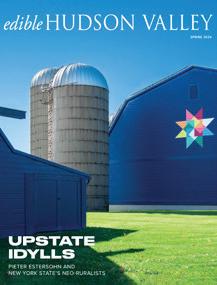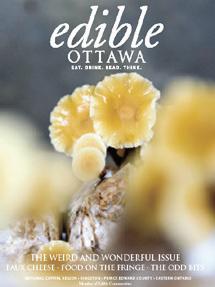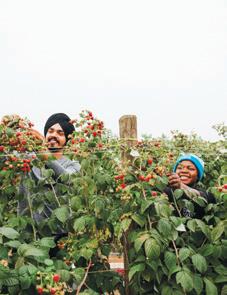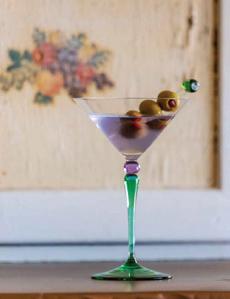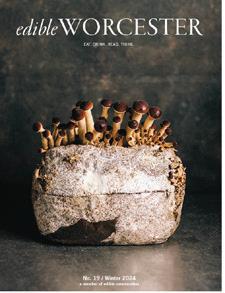
Ojai & Ventura County
CELEBRATING






CELEBRATING




You may come for the ocean adventure, but you’ll stay for the culinary delights that ignite your senses. A vast kaleidoscope of flavors and meal options from your morning coffee to late-night libations. Here, suites meet the salty ocean, savor the moments at Zachari Dunes.


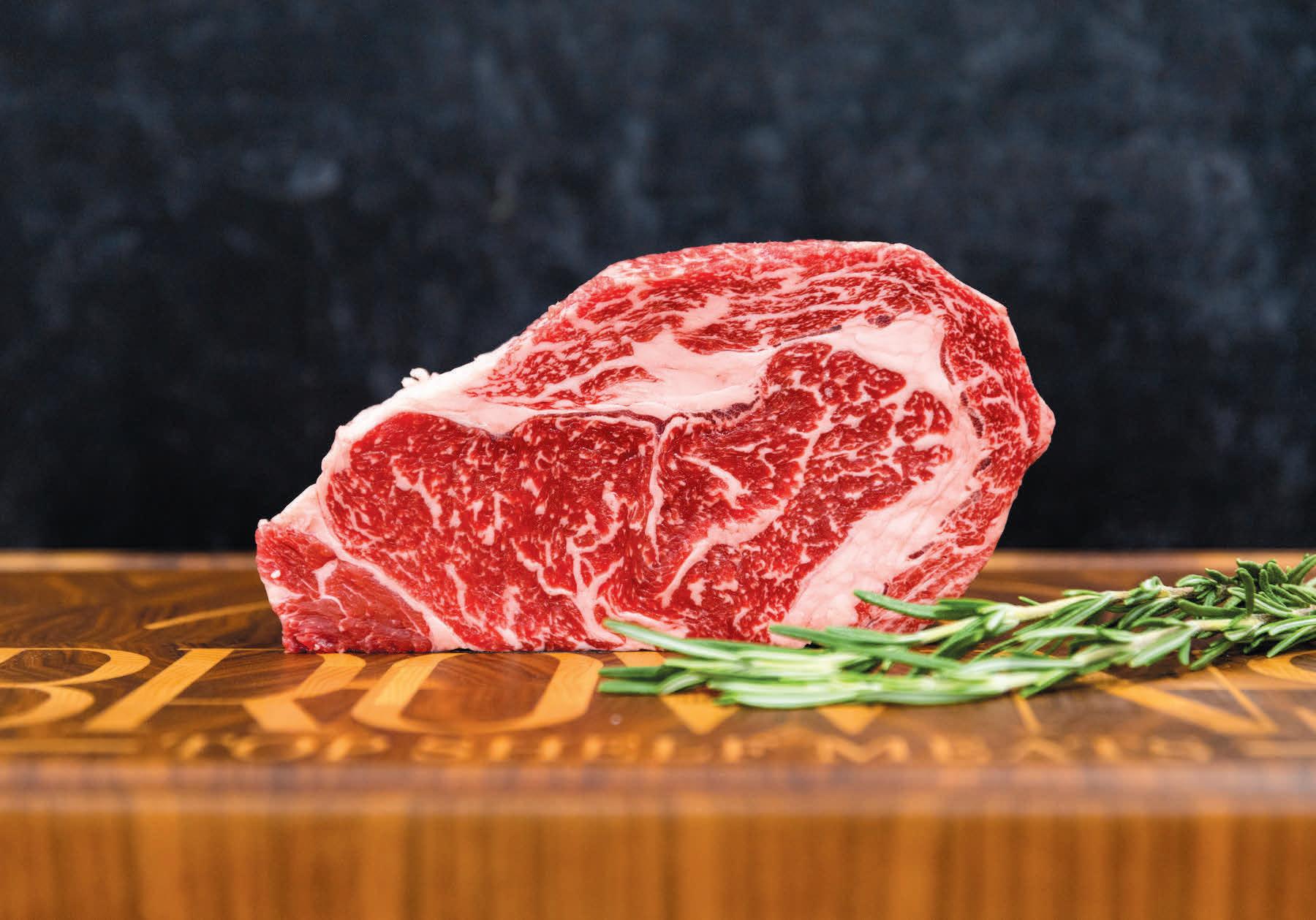




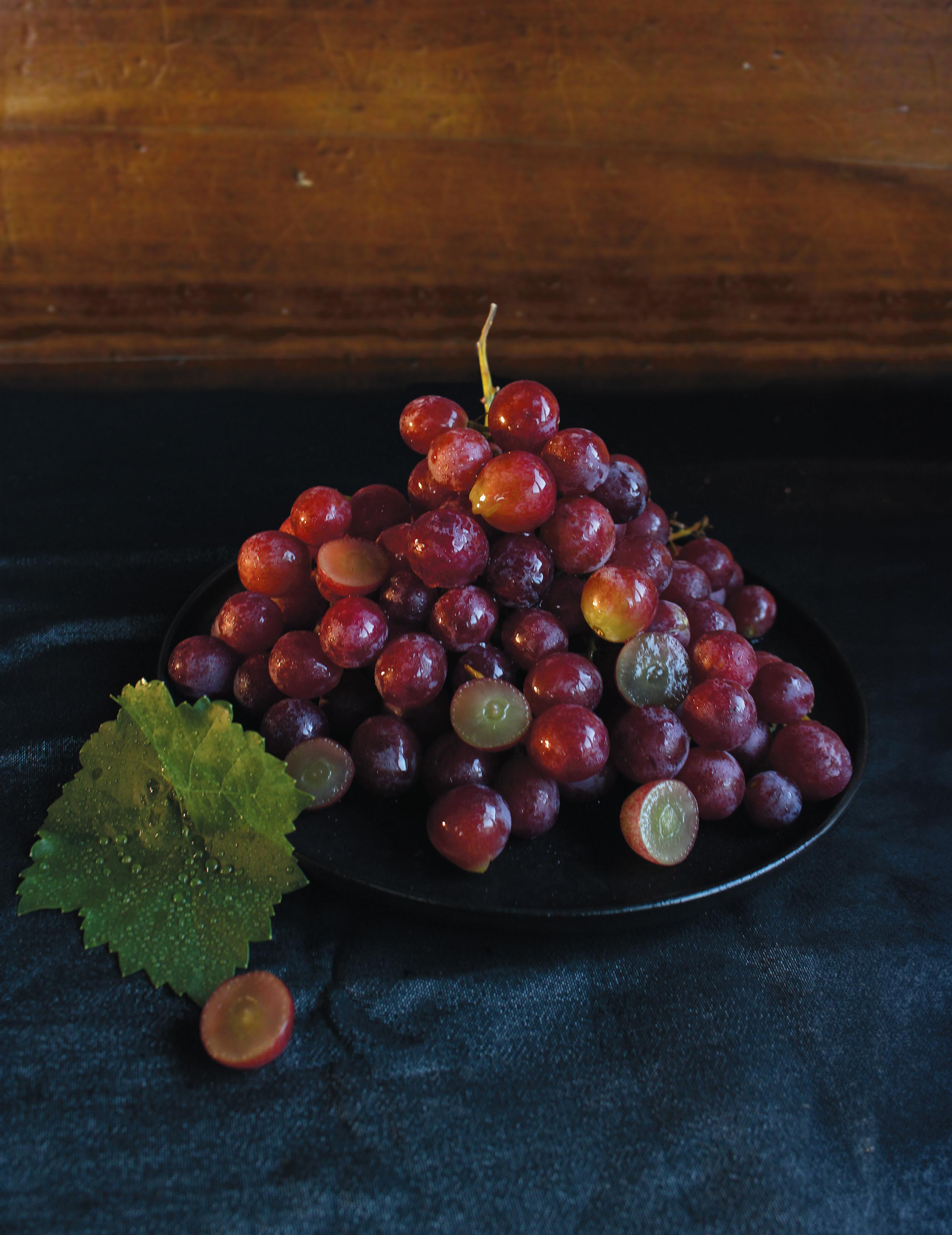
Photo by
THIS PAGE: Fall harvested grapes are not just a heart healthy snack, but also a unique and delicious cooking ingredient. Check out Robin Goldstein’s Cooking With Grapes on page 15. Photo by Tami Chu


Iread a story several years ago, told by a local woman who was in her 90s at the time, her reminiscence of a childhood long past. She spoke of running through fields so abundant with butterflies that they would often land on her if she stood still enough, and so many pupae hanging from trees and plants that she could run her hand down a branch, scooping several into a basket to be taken home and used in soup. (This is not a recommendation.)
When my kids were young, I often took them to the annual butterfly garden exhibit at the Santa Barbara Natural History Museum. We were allowed to walk into the enclosure and sit on provided benches, to watch the hundreds of butterflies from various species cavort amongst the colorful flowers. And if we kept still enough (mostly only possible for two of us), some of the beautiful pollinators would even land on us. It was the only time I could relate to the woman’s nostalgic story of butterfly abundance. Until now.
For the first time in its 10-year history my garden has attracted so many butterflies that neighbors are stopping to look and comment as they walk by. One of my kids says, “There is nothing that makes you feel more like a Disney princess than being surrounded by all these butterflies.” Another says, “It incites joy! And childlike wonder. And euphoria!”
We have long known that there is a link between nature connection and feelings of well-being. But a 2022 study by the Butterfly Conservation and University of Derby—brought to my attention by friend and psychologist Cathy Linson—showed that tuning in to nature and counting butterflies for just 15 minutes can reduce anxiety by nearly 10%.
Here’s the real takeaway, though: The connectedness that folks feel with nature directly correlates to their motivation to protect it.
Each of our stories in this issue contains a link either to well-being or to nature, sometimes both. It shows in Lovewell’s creation of a “third space” (page 12), in Cedro Restaurant and Daylight & Moon’s focus on community through food (pages 10 and 8 respectively), in Cork Dork’s determination to be a safe working environment (page 26), in the beautiful demonstration of nature in skin care on page 16 and in the clear connection of nature and wellness for disadvantaged youths at Mesa (page 30). Nature is protective and restorative, allegorically demonstrating resilience and community. And importantly, it is a key aspect of good food production. So it deserves attention, and needs partners in preservation. This year, on my little slice of urban land, I settled deeply into my belief that a partnership with nature can be magical—and on page 38, I share how you can participate.
Cue the butterflies.
Happy eating, friends,

WE DELIVER!
Subscribe at EdibleVenturaCounty.com to have copies delivered right to your door.
Check out our website, subscribe to our newsletter and follow us on social media @EdibleVenturaCounty for up-to-date events, recipes and news from the food and drink community of Ventura County.
® Ojai & Ventura County publisher & editor Tami Chu
copy editor Doug Adrianson design
Cheryl Angelina Koehler
contributors
Erika Bolden • Adriel Chu • Tami Chu • Christine Crawford • Robin Goldstein • Anne Kallas • Avery Lieb • Suzanne Luce • Jennifer Richardson
photographers
Viktor Budnik • Tami Chu
Mariah Green • Stephanie Helguera
illustrator Ramiah Chu sales
Mary DiCesare mary@edibleventuracounty.com
subscriptions
EdibleVenturaCounty.com info@edibleventuracounty.com contact us
Edible Ojai & Ventura County 2470 Stearns St. #142 Simi Valley, CA 93063 805-622-9355 info@edibleventuracounty.com


Founded 2002 by Tracey Ryder and Carole Topalian, Edible Ojai & Ventura County is published seasonally, four times a year. We are an advertising- and subscriber-supported publication, locally and independently owned and operated and a member of Edible Communities, Inc. Distribution is throughout Ventura County and by subscription for $28 per year. Every effort is made to avoid errors, misspellings and omissions. If, however, an error comes to your attention, please accept our sincere apologies and let us know. No part of this publication may be used without written permission of the publisher. © 2024. All rights reserved.






BY ANNE KALLAS
Across from Community Memorial Hospital, tucked between Quest Diagnostic and Valley Liquor and Fine Wine, is a small café where artists can discuss books and ideas while people come in and out, ordering from among a variety of toasts, empanadas and coffees along with beers and wines.
Daylight and Moon Café owner Joshua Moschiano is hoping that the varied menu will entice customers wanting to take a break from a busy medical schedule or those just wanting a friendly spot to chat with friends.
“The location is easy to miss, so we are very reliant on the hospital employees,” says Moschiano, explaining that weather—too hot or too cold—can affect whether people decide to stroll over on their lunch hour. He says that so far business is being fueled by word of mouth. “Someone will meet one person, who asks, ‘Have you tried?’ and that person will visit and then they run into somebody else and they know somebody else. It creates a wonderful community of people.”
The spot was formerly occupied by Channel Islands Juices. But when that shop closed, Moschiano decided he’d put his 20-year-long coffee shop experience to good use. His father had died, leaving him as the beneficiary of his dad’s life insurance, along with the proceeds from

Owner Joshua Moschiano says he imagines flavors of the toasts in his head before trying them out in real life. Here he serves the Cucumber Dill with a seasonal orange mocha latte.
the sale of his dad’s house. “I think he’d be incredibly proud,” he says. “ We did a lot of painting and made improvements in the music system to create a nicer vibe,” he says, adding that records and CDs are available for sale.
A single dad, Moschiano, often brings his daughters Lily, 12, and Katie, 8, to spend afternoons at the coffee shop. Both girls say that their favorite things at the shop are the toasts, with cookie butter toast a favorite.
Moschiano jokes that he often tastes his different toasts ideas in his head before he makes them. “I’m a huge Beach Boys fan and Brian Wilson would say he could hear every voice in his head before anyone had sung a note,” he says. “I get ideas in my head of unique flavor profiles—like one that’s cream cheese, cucumber, dill, pine nuts and preserved lemons. You’ve got saltiness and tartness—all of the flavors. And it ended up tasting exactly like it did in my head.”
Some of the other toasts include avocado (of course), smoked salmon, burrata, turkey and brie and brunch toast, which is served with a mimosa.
Empanadas by Chef Galo in Oxnard are a fairly recent addition. They include ratatouille, Argentinean beef and potato cheese varieties, and they are flying off the shelves, says Moschiano.
Tony Hernandez and his friend Delaney Peterson were enjoying an afternoon at the shop, chatting and sipping. “ We love coming in here and talking about books,” says Peterson, who met Moschiano at Barnes and Noble, where he is also a regular. Hernandez has some of his paintings on display, and he’s even sold one at the shop.
Moschiano says he tries to focus on local purveyors, including locally roasted coffee by Calioh Coffee. Beer comes from local Ventura breweries and wine is from Central Coast vineyards. Fresh produce comes from The Berry Man. Signature coffee drinks include the Venturan with caramel sea salt—because the seaside city should have sea salt in its drink, says Moschiano. There’s Lavender Haze, because everyone’s a Swiftie these days, and a customer favorite, Café de Olla, which has an intense cinnamon coffee taste.
“Our regulars often hang out for hours and we all sit together and join in conversation,” he says. Moschiano does his part to encourage this environment by “the personal things—remembering their names and knowing what they order.”
Daylight and Moon Café
2991 Loma Vista Road, Suite C, Ventura. 805-342-3584
DaylightAndMoonCafe.com
Anne Kallas is a prolific freelance writer focusing on Ventura County. A fan of local, seasonal produce, she is the farmers’ market segment contributor for the LIVE 805 show on KVTA 1590AM. She lives in Ventura and is a former columnist, writer and copy editor for the Ventura County Star

BY ANNE KALLAS | PHOTOS BY VIKTOR BUDNIK
An osteria or a trattoria? Which is Cedro of Newbury Park?
Traditionally a trattoria is a small, intimate restaurant with a few carefully crafted dishes. An osteria is a wine bar that is more casual and has evolved to include a dish or two of food. These definitions have blurred over time, but Mattia Raimondi, one of the owners of Cedro, says it’s an osteria.
Tucked away in Newbury Park just off of the 101, Cedro—named for the citron fruit also known as Buddha’s hand—offers beautiful, carefully crafted plates of housemade pasta, salads, antipasto featuring cured meats from Italy, and some serious Italian favorites such as braised short ribs and chicken caprese Milanese. In its short time in

operation, Cedro quickly received a Michelin Guide Recommendation and in August was upgraded to Bib Gourmand, one step below a star.
But it isn’t about the star, says co-owner and chef Matteo Di Nicola, who remembers the cedro fruits growing on the family’s farm, where the thick peel would be candied or used in liqueurs. He’s worked in Michelin-starred restaurants and says he prefers the lower stress of his own kitchen.
Both men knew each other growing up through their families, but it wasn’t until they arrived in the United States that they met up to form a restaurant—or osteria.
“ We got reconnected here in the States,” says Raimondi. “In Italy
we live on different sides. Matteo was working and I was working and traveling. We both came here at pretty much the same time.”
The menu is the creation of Di Nicola, who grew up following his family tradition.
“My family always had a restaurant in Italy. As I grew up, I really liked it. I was in chef school in Italy for five years. Every year you have to go to a stage [internship]. The first stage was in Rome at a restaurant. There I learned a lot about typical Italian-style food,” says Di Nicola.
From there he went to Paris, where he was schooled in the finer techniques of classic cuisine. His path twisted through the Canary Islands before coming to the United States.
“For me, making food is what I really enjoy,” says Di Nicola. “I like to get in the restaurant and create new things. For me, it It’s like what making a painting is like for an artist. To cook is to relax.”
Many of the classic Italian flavors are derived from ingredients from Italy, according to Raimondi. Even though some of the same ingredients are available here, it just isn’t the same.
“For example, tomatoes: We use some imported San Marzano tomatoes. The good thing is, every year there taste. Some years it’ we prefer to import San Marzano. But in salads and other special fresh uses we will use local [organic tomatoes],” Raimondi says.
Di Nicola says he sophisticated about Italian cuisine.
“A lot of people have been to Italy for vacation,” he says. “This is the closest thing to the food there. Although portions are not as huge as they are in the United States, I would say this is a pretty good area [for culinary sophistication.]”
While business has been good since they opened in late January, they would like to see more.


“I think it’s going well. Customers appreciate the concept and food a lot. We see the same people coming back six or seven times,” says Raimondi. But before they think of expanding, they want to make sure the current restaurant is working well.
“For the future, we’d like maybe to expand once we know our first restaurant is strong enough—to be sure this is the actual model that we will be able to keep as an example. The intention is to make more good food—more good pasta without rushing too much. The intention is to have fun and do a good job. That’s the main mantra for business. The sky is the limit. We want to fly on a good airplane,” says Raimondi.
Cedro
2385 Michael Dr., Newbury Park 805-498-7035
CedroRestaurant.com
Co-owners Chef Matteo Di Nicola (right) and Mattia Raimondi originally met in Italy but reconnected in the States for what seems to be a great partnership of front and back of house.



BY ANNE KALLAS | PHOTOS BY VIKTOR BUDNIK
The first day Lovewell Tea and Coffee opened its new shop in Oak View back in May, a woman came in. Andrea Dornbusch greeted her, as she always does, with “How’s your day?”
She was stunned by the reply. “The lady says, ‘My husband just died earlier. I need a space to come.”
And that is just what the Dornbusch sisters—Andrea is the elder and Emily isn’t—had envisioned when they opened their first shop in May 2020 in Ventura on the Avenue, north of Stanley Avenue. The sisters wanted it to be what is known as “a third space”—a place to go outside of work and home where you can feel comfortable, welcome and safe.
The concept of hospitality before transaction came to Andrea and Emily when they visited a cousin in Dublin, Ireland. They were intrigued by the coffee culture, with its warm, welcoming ambience. While in Ireland, the sisters heard about the concept of “third spaces”—the first space is home, the second is work or school and the third is where you want to be and hang out.
“ We thought coffee was the perfect way to go about creating a third space,” says Emily. “Everybody has a spot where they feel comfortable. We want to be that spot.”
So in 2020 the sisters opened up their first—and they thought only—Lovewell Tea and Coffee on Ventura’s Westside, naming it by combining the words love and well “Our goal is to love people well, even if it just through a cup of tea or coffee,” says Andrea.
The shop was popular, with a bevy of regulars, and that seemed like enough. But when The Local Cup closed recently, it left an empty spot along a small strip mall in Oak View with a doughnut shop on the southern end that abuts the Ojai Valley Ranch Market, and the landlord urged them to open another store there. As 20-plus-year residents of Oak View, they knew the community and its unique diversity. The sisters consulted with family and friends, asking them “Are we insane?” Andrea says.
They made renovations in just a month and a half, which included a rainbow-ish decoration with greens and yellows, a children’s corner with books and toys, a book nook exchange for adults, games and other fun ways to pass the time with friends.

“There is a father and son who have come in here with their portable chessboard that they set up and play,” Andrea says. “We think it’s awesome!”
Then they opened their doors.
“ We thought it would be easy and slow. But it was a flash flood,” says Andrea, attributing the deluge to the community responding to their efforts to improve the small downtown North Ventura Avenue Oak View area. The sisters embrace the doughnut shop—KJ Donuts, at the other end of the strip of shops—referring their customers to the amazing breakfast sandwiches and, of course, doughnuts. The shop in turn refers customers to Lovewell for coffee or tea.
Emily focuses on the coffee side of the business, while Andrea specializes in teas. The coffee is from The Well Coffeehouse in Nashville, Tennessee—which imports coffees from around the world trying to benefit the farmers, while also donating their profits to trusted organizations worldwide to provide clean water and sanitation to underserved communities.
“ We fell in love with how they use coffee to provide clean water around the world,” says Andrea.
For teas, they found a certified organic producer: Fraser Tea, where three brothers with disparate backgrounds have joined together to create various tea blends, including Irish Breakfast tea, which the sisters feel is necessary.
Pastries are made by Cake Monkey Bakery based in Los Angeles, local bakers Garu Bread and Butter, (a Ventura based cottage bakery that specializes in croissants), and most recently, nearby SunOven Gluten Free Bakery. Of course, there also are those enticing doughnuts just a few doors away.
The Dornbusch sisters wouldn’t go so far as to say that their shop is opposed to social media—after all, they have Instagram and YouTube pages, and WiFi—but it is a place where social interactions tend to be face to face.
“As we get older, this is what we desire: to sit down across the table and talk. It’s cool to watch the world go by,” Emily says.
Lovewell Tea and Coffee
Open 7am to 2pm Mondays through Saturdays 485 N. Ventura Ave., Oak View; and 2271 N. Ventura Ave., Ventura Lovewell-Tea-Coffee.square.site


BY ROBIN GOLDSTEIN

As fall approaches, we naturally start to think about the upcoming holidays. It seems that our gatherings are becoming less about tradition and more about community, at least in my neck of the woods. Food, as always, brings us together, even in untraditional ways. Here are some recipes that can help your gathering taste of the season in perhaps some new ways.
Robin Goldstein’s cooking career has been centered in California, where she has been preparing foods for 30+ years. She brings to the table a deep-felt art of balancing flavors while interacting with her private clients in their homes. She shares her delicious recipes through her popular cookbooks, perfectly paired for those who seek savory Mediterranean-inspired flavors. PrivateChefRobin.com
Many of us are on an endless search for a new and different way to prepare chicken. It’s the meal we enthusiastically construct to satisfy those we feed day after day, only to get a reluctant “it’s good” as the only feedback. Why not jazz up the occasion by spicing up the bird with fennel, cumin and coriander, harmonized with grapes, black olives and a splash of wine?
Serves 4–6
3 pounds bone-in, skin-on whole chicken, cut into parts (thighs, drumsticks, and/or breasts)
Sea salt and freshly ground pepper
1 teaspoon ground fennel
1 teaspoon ground cumin
2 teaspoons ground coriander
2 tablespoons extra virgin olive oil
1 cup seedless grapes
1 cup pitted Kalamata olives
2 shallots, peeled, sliced thin
½ cup dry white wine
½ cup chicken broth or water
Preheat the oven to 400°F.
Wash and pat the chicken dry, then season generously with salt, pepper and the fennel, cumin, and coriander.
Heat a heavy, ovenproof 12-inch skillet (cast iron works best) over medium-high heat. Working in batches, take your time browning the chicken pieces on both sides in olive oil, transferring the first batch to a plate, while the second batch browns nicely, again on both sides. Return all the chicken pieces to the pan, skin side up, and surround with the grapes, pitted olives, and shallots.
Roast the chicken in the oven for about 45 minutes, until cooked through and the juices run clear.
Transfer the chicken to a platter, leaving the grapes and olives in the skillet. Place on stovetop over medium-high heat, and carefully add the wine and chicken broth or water to the skillet. Bring to a boil, scraping up any browned bits, and cook for 3–5 minutes, until reduced by half. Pour the sauce, grapes and all, over the chicken to serve.

Looking for comforting flavors and textures that fit the cozy, indulgent vibe of Thanksgiving?
These wild rice griddle cakes use pecans, which pair well with traditional flavors in fall holiday meals, in case you are just looking for a new side dish. Because they come together quickly, these savory pancakes are a convenient weekday meal option as well. Simply mix the batter ahead of time for stress-free cooking. These griddle cakes can also be prepared in advance and reheated, reducing last-minute preparation.
Makes 12 griddle cakes
½ cup shelled pecans
3 eggs
½ cup flour (or gluten-free flour)
½ teaspoon baking powder
½ teaspoon garlic powder
1 teaspoon sea salt
1 cup cooked wild rice
¼ cup water
½ cup dried currants
2 scallions (white and green parts), thinly sliced
Olive oil or avocado oil for frying
In a cast-iron skillet over medium heat, toast pecans for 3–5 minutes, stirring occasionally, until browned and fragrant. Cool completely then chop the nuts finely.
In a medium bowl, whisk eggs then stir in flour and baking powder until combined. Add garlic powder and salt.
Mix cooled cooked wild rice into batter and stir well to combine. Add ¼ cup of water to loosen the batter. Stir in currants and sliced green onions
When ready to cook, stir chopped pecans into batter. Heat a cast-iron griddle or large nonstick skillet over medium heat with a few tablespoons oil. Scoop heaping tablespoonfuls of batter into hot pan, pressing lightly to flatten. Cook 2–3 minutes per side, until lightly browned. Transfer to a baking sheet pan and keep warm. Repeat with remaining batter, adding more oil as needed.
The griddle cakes can be made ahead and reheated in a 350°F oven on a baking sheet until warmed through.
But maybe don’t…
BY SUZANNE LUCE
Do you sometimes feel like everything is evolving into what it should have been to begin with, that to move forward we must move backward? What we put on our skin—like what we eat—if made with synthetic ingredients, can disrupt hormones, trigger allergies and sensitivities, and exacerbate physical issues we are hoping to heal.
Similar to a chef or nutritionist, skin care product developers who source their ingredients from nature and also consider your well-being are like apothecaries, trusting the power of plants rather than synthetic chemicals that might do more harm than good. Safe and food-grade ingredients in our skin care products are important, because what we put on our skin—our largest organ—ends up inside our body.
The companies highlighted here are making products that heal and nourish the skin, without compromise, and their success is proof of a growing and sustainable trend of skin care, rooted in health, purity, transparency and environmental stewardship.
In the same way that enjoying a good meal is about more than the food, healthy skin is about more than what you put on it. Daron Hope, founder of EarthTonics, says that what you eat, your hydration, emotions and nervous system all contribute to the health of your skin. She considers herself a skin-care chef, creating healing tonics for the skin that she hopes are also part of a process or ritual where you return to yourself and check in on those other spaces.
Daron had sensitive, acne-prone skin and the products she was using were making her symptoms worse. “I was always one of those people, where my skin was communicating with me on behalf of my entire body,” she says. “I was waging war on my skin with chemicals and acids, but as I learned more about the holistic nature of our skin, I realized we can’t treat our skin as if it’s something separate from our body.”
So she switched gears, and started using simple things from her kitchen like cold-pressed olive oil, honey and yogurt, which were at least more soothing than what she had been using. She began studying herbalism and became a licensed aesthetician, and it was then that she utilized the power of plant medicine using simple, unadulterated ingredients, and developed a few formulas that worked for her. The next step was to make sure they would work for other people, so Daron shared them with friends and family, and they came back for more.
That was 16 years ago. “After several years selling my formulas locally at the farmers’ market, I offered bespoke facials out of The EarthTonics Facial Studio for a decade,” she says. “The herbs are
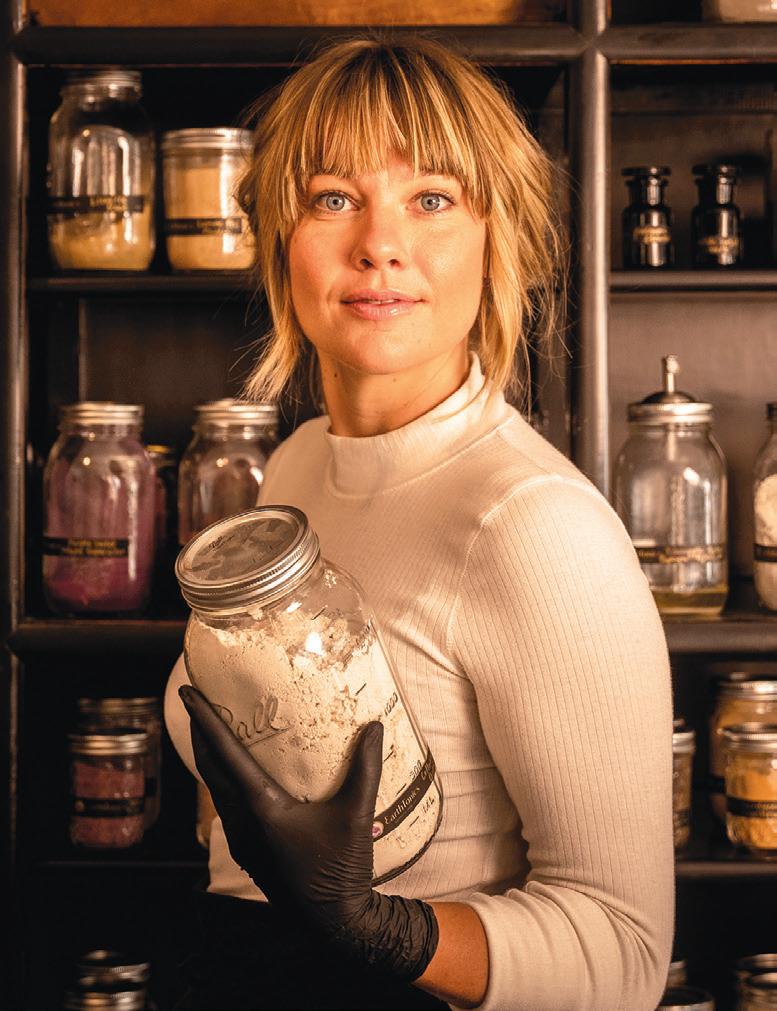

insanely beautiful and healing for the skin, but the products were also a catalyst for self-love,” she says. “I’ve noticed for myself and others that when we make skin health our goal and self-love our practice, vibrant, authentic beauty awakens in us.
There is a certain kind of radiance that gets ignited by having the courage to love and accept ourselves. I am passionate about the impact this has in people’s lives, when they feel beautiful in their skin.”
Rather than harsh ingredients that cause more problems than they solve, Daron focused on protecting and working with the skin’s own microbiome. “Similar to the gut microbiome in our digestive system, the skin barrier, which also has to do with pH and natural lipids, needs to be supported and intact, and ingredients that feed it rather than disrupt it,” she says. “I am committed to nutrient-dense skin care, made from the purest, most potent and bioactive botanical ingredients I can find.”
Her “tonics” soon became her full-time business, and she opened an apothecary for customers and practitioners in a studio adjacent to her home in Ojai. In 2022 the EarthTonics Apothecary expanded to a warehouse nearby, where she blends everything in-house, sells and refills the tonics for local customers, and ships across the U.S.
The tonics are made with ethical and fair-trade ingredients, packaged in 100% recyclable violet glass and shipped with plastic-free shipping. Daron says she wants to be proud of the company beyond the products it sells by building “a community of skin-care purists, holistic practitioners and like-minded businesses that create ripples of beauty” locally and across the world.
A few of the botanical hydrosols in EarthTonics products come from Sweet Mountaintop Farm on Rincon Mountain above Carpinteria, and herbs, oils and other botanical ingredients come from a myriad of other small farms and artisan distillers. The shea butter is produced traditionally, raw and cold-pressed by a women’s co-op in Africa. For every bottle sold, a tree is planted by Trees for the Future, which trains farmers to use permaculture and land management skills to regenerate their land and vary food sources for their families and communities. (For more info visit Trees.org.)
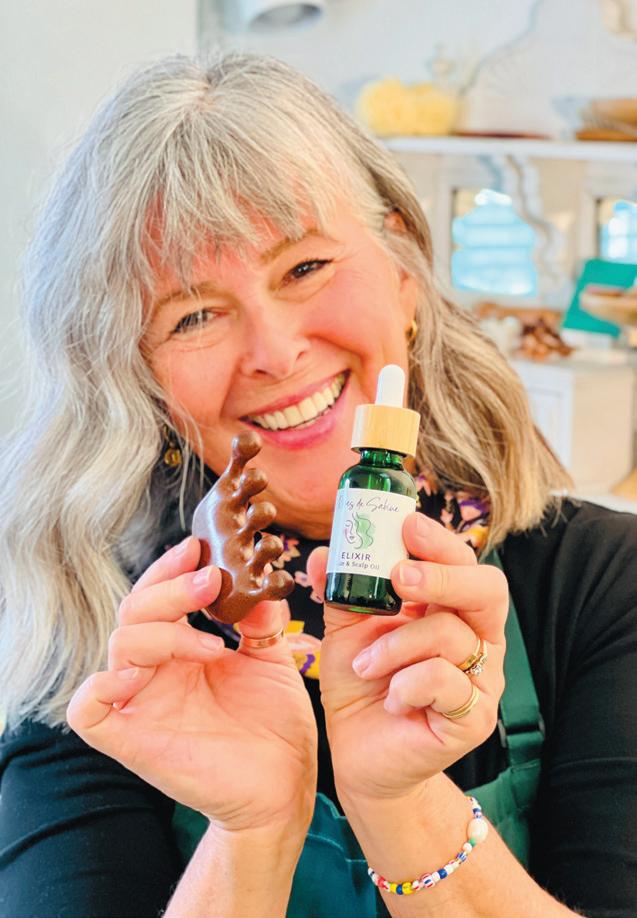

EarthTonics Apothecary + Refill Shop is open Thursday–Saturday,11am–3pm at 416 Bryant Circle, Unit O, Ojai | @earthtonics, earthtonicsskincare.com

Since starting Rêves de Sabine, Sabine Dodane has made gratitude the cornerstone of her business. She includes a handwritten thank-you note in every online order.
After spending much of her career designing packages for corporations, Sabine Dodane now creates not just the outer packaging but also products that meet her own standards—carefully selected and sourced ingredients and minimal and sustainable packaging. To Rêves de Sabine, her skin-care company of nine years, she brings her passion for health and wellness, and her philosophy, which both come directly from nature.
“All my life, I had made natural products for friends and family and I felt it was finally time to quit my job and start making products I could really be proud of and stand by,” says Sabine says. “I wanted to be transparent and ethical with what was in it and how it was made, using only ingredients that benefit the skin and contribute to wellness in some way.”
Rêves de Sabine products are free of preservatives, fillers, emulsifiers, coloring and fragrances, and contain ingredients that are cold-pressed, organic and unrefined. “Nature has everything you need to take care of yourself, and the products also just happened to smell good, simply from the combination of its good fresh ingredients,” says Sabine, who notes that her business is green certified. “I think we are starting to look at the wisdom of nature, and I believe we would be well advised to learn from how natural systems maintain balance, resilience and sustainability.”
Sabine’s philosophy on sourcing is to get her ingredients from a manufacturer in the place it originally comes from or has been made for centuries—such as argan oil from Morocco, lavender from France and rose essential oil from Bulgaria—but she also sources locally when feasible and it suits her products well, such as lavender from Frog Creek Farm in Ojai and sage honey from Blue Ridge Honey in Ventura.
Her passion project also brought a shift in the way she approaches customers. Instead of developing a product and then trying to convince someone they should buy it, she listens and develops products in response to her customers’ needs. “It’s all the more rewarding that way, giving me challenges to solve and a better motivation,” says Sabine.
The best-selling Dream Balm was her first product, but her second—the Repair Face Oil—came when a friend asked Sabine to create something
healing and pure for the scars left after the removal of malignant skin cancer from her face. During the early days of COVID, Sabine developed three scented sprays—Calm, Uplift and Breathe—to keep her customers’ face masks smelling fresh; they also provided unique aromatherapy benefits during a difficult time.
When clients were asking for eaux de toilette versions of her scents, she hesitated, knowing that traditional spray perfumes generally use alcohol with a bitter, toxic additive to make it unpalatable for consumption. Sabine wanted to be consistent in her commitment to clean ingredients that are beneficial to the skin, so she sourced an additive-free, pure, organic foodgrade alcohol and created eaux de toilettes in four new scents.
“You won’t find creams and lotions in our line because both are emulsions, which need emulsifiers, texturizers and water. Preservatives are often added to prevent the growth of bacteria, mold, and yeast, which can spoil the product and pose health risks to the users, but they also disrupt the balance of the healthy microorganisms on your skin,” says Sabine.
She compares using her “fresh” products to eating a fresh-off-the-vine sun-ripened tomato at peak ripeness. “In contrast, a shelf-stable tomato product, while convenient and longerlasting, often lacks the same freshness and may contain preservatives or added ingredients, resulting in a diminished flavor and nutritional profile compared to its fresh counterpart,” she says. Much like shelf-stable skin-care products. She believes we can have a different relationship with food and self-care.
Rêves de Sabine features oils and serums instead, such as her popular AM/PM face oils, which take a bit more time to work into and penetrate the skin, Sabine says, but they are skin-friendly and respect and protect its natural microbiome.
“The extra effort it takes to apply an oil forces you to take the time to feel what your body needs, improves skin circulation, helps flush out toxins and stimulates the immune system. So it encourages you to take better care of yourself,” she says.
Find Rêves de Sabine at Rainbow Bridge, Ojai, and these markets and events in Ventura: First Fridays Ventura at Bell Arts Factory (1st Fridays), Social Club Market (1st Saturdays), VC Art Market (2nd Saturdays, every other month), Findings Market, Oak St. (spring and fall), Market By the Sea, Ventura Portside Harbor (3rd Saturdays. @revesdesabine, revesdesabine.com
Mama Medicine was born not long after the birth of Sierra Stover’s daughter. Sierra was repotting an overgrown aloe plant and ended up with extra leaves, so she made aloe gel. She posted on her Instagram story, asking if anyone was interested in the aloe gel.
“That is how my lash and brow serum was formed, which contains aloe gel, which was the first thing that people wanted to buy,” she says. The growth of this initial interest into a successful skin care company she is able to run from home was an answer to prayer, says the single, stay-at-home mom of a now-2-year-old daughter.
“I’ve been in business one year and I am so grateful because I’m able to be home with my daughter and share my heart with others through my products.” She sells mostly online and by word of mouth, but also sets up shop consistently at the Ojai Community Farmers’ Market. She says she loves being face-to-face with her customers and hearing feedback such as “yours is the only brand I trust” or “your products changed the way I feel about myself.”
Like many new moms, Sierra was passionate about what she put on her daughter’s skin, and her own, and wanted to avoid many of the ingredients in store-bought skin care products. “If I can eat it, then I will use it on my skin,” she says. “I want mothers to feel safe using my products on themselves and their kids, and also offer something safe for the Earth and its oceans.”
The company expanded quickly from aloe gel to tallow products such as Reef Safe Sunscreen, Whipped Tallow Butter, and Bug Butter. “Because tallow is so close to our skin’s makeup, it has incredible bioavailability—it’s intelligent and responds to what your body needs,” says Sierra.





She infuses grass-fed and -finished tallow with lavender, rose, chamomile and calendula on low heat on the stove in her kitchen. She prefers using whole-plant infusions, she says, because the plant’s volatile compounds, which allow plants to defend against bugs, attract pollinators and communicate with each other, are more concentrated in essential oils and may disrupt our hormones when used in skin care. She does use cinnamon and vanilla essential oils in her Bug Butter since bugs will avoid those, and a small amount of tea tree oil in her original tallow butter and botanical facial cleanse for their antimicrobial and antiseptic benefits.
Sierra says she would love to find a local farmer to supply the tallow, but for now her source is out of state. The flowers come from Mountain Rose Herbs in Oregon, and the organic shea butter and hexane-free castor oil she uses come from Africa. She recently partnered with Mission Beekeeping for their raw local honey. She still grows her aloe at home, but has a friend in Ojai who grows it if she needs more.
Find Mama Medicine at Ojai Community Farmers’ Market.
@mama_medicine, shopmamamedicine.com
Danielle Rae was pregnant and struggling with eczema. Her grandmother from the Philippines, who had passed a few years earlier, surely would have healed her skin with the brilliant orange flowers she had grown in her yard. But Danielle’s doctor prescribed steroids that she wasn’t comfortable using while pregnant, so she left it untreated. When her son was born and also suffered with eczema, she began a deep dive to find a natural solution.
Calendula, a flower related to marigolds, kept coming up in Danielle’s research. When she realized these were the same flowers her grandmother had grown, she was immediately taken back to her childhood, when remedies came from her grandmother’s kitchen rather than the store.
She bought a pack of calendula seeds, planted them in her yard, and waited for the flowers to bloom. In the meantime, she tried a few calendula products she found on Etsy, and while those provided some relief, they also included ingredients such as alcohol which she learned can further irritate eczema and keep the skin from healing.
Danielle’s grandfather gathered the grandmother’s recipes and her husband encouraged her to keep experimenting, testing each attempt along with her on his own sensitive skin. It took about six months to develop a salve that they both liked, made with oil that she infused with dried calendula flowers for four to six weeks in the warmth of the sun. “At that time, I had mason jars filled with oil and flowers out in the yard—not sure what the neighbors were thinking!” she says.
“ We then came up with a proprietary essential oil blend for the salve to add to its healing properties, using calming lavender, copaiba (which is good for pain), bergamot (for a citrusy scent) and a geranium that is good for the skin,” says Danielle. “Customers say the scent is calming and soothing—that it smells like home.”





In 2020, she shared a post on social media about her process of growing the flowers and making the oil, and how it was working for her family, not only for their eczema, but for bug bites, sunburns and scrapes. Several orders came in that same day, so she made the products that night and delivered them in person the next day, Mother’s Day. Before that post, she had only made the salve occasionally as gifts for friends.
That summer, just after Honey Shine launched a website, Little Birds—a kids’ consignment shop in Midtown Ventura—reached out on behalf of their customers (mostly mothers looking for products with clean ingredients for themselves and their kids), and became the first of many wholesale accounts. Honey Shine’s calendula salve was named the best mom and baby product at the 2022 Prego Expo, which they travel to each year.
Honey Shine now has 40 calendula-based products and over 6,000 followers on Instagram, but Danielle says she is most proud of being able to shine the light on calendula, bringing it closer to becoming a mainstay in households. Today, she still grows and harvests her own calendula for Honey Shine products, filling her front and back yards and infusing her oils slowly outside in the sun. She dreams of someday having a calendula farm where she can grow rows and rows of the flowers of her childhood to share with the community.
Find Honey Shine at Makers’ Market in Midtown Ventura, Santa Paula Farmers’ Market, Saticoy Farmers’ Market, Shops in Ventura County such as Little Bird Kids’ Consignment, Blue Ridge Honey in Ventura. @honey_shine_calendula, honeyshinecalendula.com
Suzanne Luce, a writer and mother of three, has long been a real-food enthusiast, making much of the food her family eats from scratch. She is also actively involved with Slow Food Ventura County as baker and publicist. She has worked professionally in marketing and PR and earned a bachelor’s degree in literature/writing from the University of California, San Diego.




Editor’s Note: Ventura County has an plethora of conscientious skin care products made and sourced locally. Suzanne Luce attended a workshop by GARA’s founder on hydrosols (the foundation of many skincare products). You can read about her experience and what she learned by clicking this QR Code.







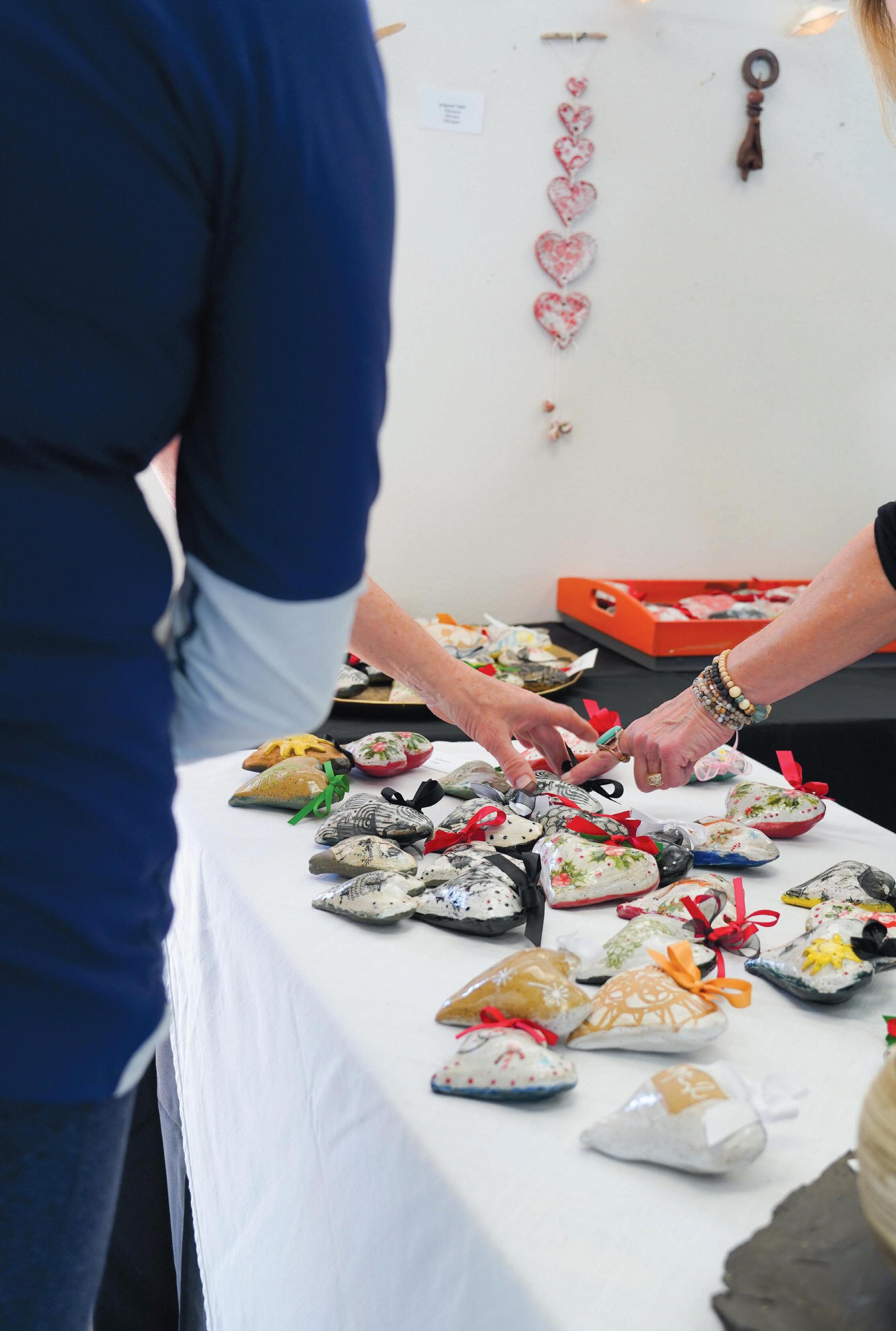


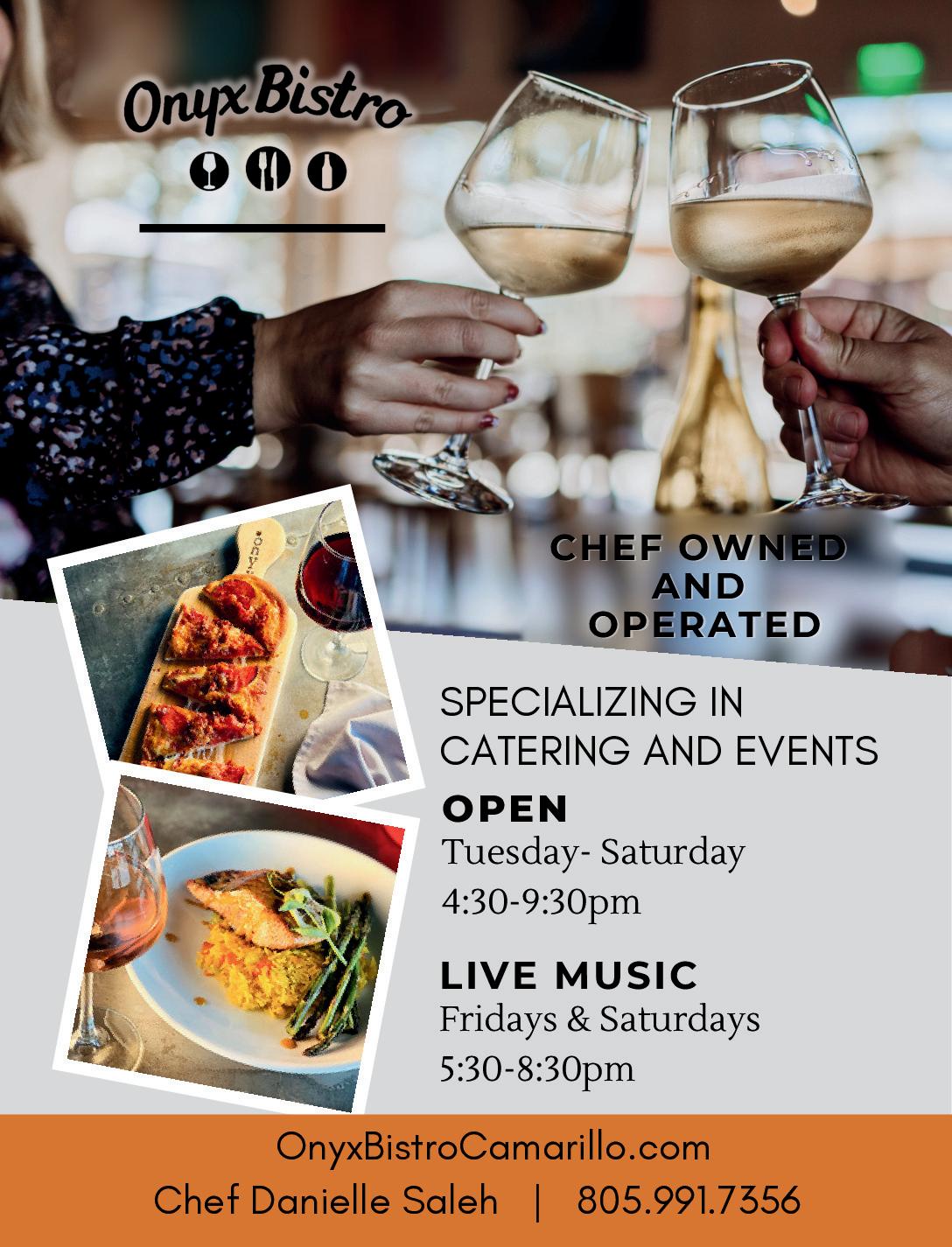

with Wild Mushrooms and Miso
This recipe is adapted with permission from Nurturing Mind, Body and Soul: Demystifying the Journey by Christine Crawford. (August 2024)
Creating a harmonious balance between the mind, body, and soul is essential for achieving a state of wellbeing and fulfillment. This balance forms the basis of Nurturing Mind, Body, and Soul, where I share the gentle steps we can take daily to improve our lives. When we treat our minds, bodies and souls with gentle kindness— rather than the striving for perfection that many of us have pursued relentlessly—we can reach the balance that is, at the core, our intended way of living. This luxurious Butternut Squash Soup is a harmonious blend of earthy, sweet, and savory notes that will transport your taste buds to a place of comforting indulgence.
Serves 6
For the Soup
2 pounds (about 1 kg) butternut squash, peeled, seeded, and diced
1 onion chopped
2 cloves garlic minced
1 tablespoon olive oil
4 cups vegetable broth
¼ cup white miso paste
½ cup plain Greek yogurt, optional, for creaminess
Salt and black pepper to taste
For the Wild Mushrooms
8 ounces (about 225 grams) of mixed wild mushrooms (such as shiitake, oyster or cremini), cleaned and sliced
2 tablespoons olive oil
2 cloves garlic minced
Salt and black pepper to taste
Fresh thyme leaves for garnish
To make the soup: In a large soup pot, heat 1 tablespoon of olive oil over medium heat. Add the chopped onion and sauté for about 5 minutes or until translucent.
Add the minced garlic and sauté for another 1–2 minutes until fragrant.
Add the diced squash to the pot and sauté for 5 minutes, stirring occasionally.
Pour in the vegetable broth and bring the mixture to a boil. Reduce the heat to low, cover, and simmer for 20–25 minutes or until the pumpkin/squash is tender and easily pierced with a fork.
Mix the white miso paste with a few tablespoons of the soup broth in a small bowl to create a smooth paste.
Remove the soup pot from the heat and let it cool slightly. Then, using an immersion blender or countertop blender, puree the soup until smooth.
Return the pureed soup to the pot and stir in the miso paste mixture and Greek yogurt (if using)—season with salt and black pepper to taste. Simmer for an additional 5 minutes to heat through.

To make the wild mushrooms: While the soup is simmering, heat 2 tablespoons of olive oil in a separate skillet over mediumhigh heat.
Add the minced garlic and sliced wild mushrooms to the skillet. Sauté for about 5–7 minutes, or until the mushrooms are tender and browned.
Season the mushrooms with salt and black pepper to taste, and remove them from the heat.

To serve: Ladle the hot soup into bowls. Top each serving with a generous portion of sautéed wild mushrooms and a sprinkle of fresh thyme leaves for garnish.


WEDNESDAYS




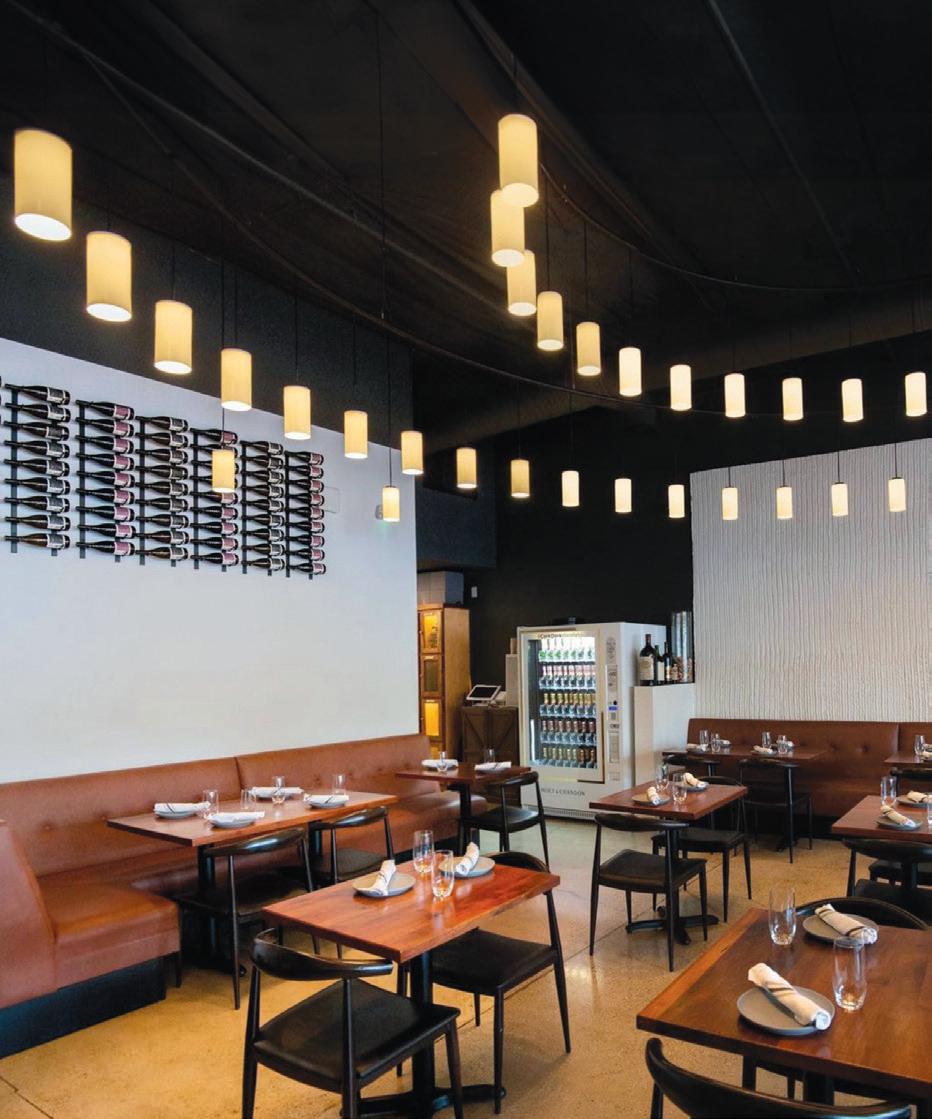


BY ERIKA BOLDEN
When Dan Margolis and Danny Amirian opened Cork Dork in 2020, it was a small wine bar catering to the local community. The limited kitchen produced dishes that accompanied a thoughtful selection of domestic and international wines and beer. The subsequent four years saw an evolution into a noteworthy neighborhood restaurant and full bar with a fresh and seasonal menu dedicated to supporting the staff in addition to serving guests.
Unless you’re lucky enough to live nearby, it might be a trek seeking out this unpretentious but high-end restaurant three miles north of the 101 in Westlake Village. The vibe is special enough for a celebratory occasion, but casual enough that you could stop in for a bite after hitting the Pavilions a few doors down.
Chef Danny Amirian rotates at least one menu item daily, representing a wide breadth of regions and spanning decades of time. Danny’s cultural influence shines with Persian touches in signature dishes like the Crispy Cauliflower with yogurt, eggplant tapenade and crispy chickpeas; or Baba’s Chicken with couscous, harissa carrots, labneh, preserved lemon, golden raisins and walnuts.
Beyond his personal heritage, Danny’s travels lend seasonality to the menu. A trip to the Yucatan Peninsula inspired the Mexican flair of his summer menu in Hamachi served with leche de tigre, escabeche, tomato sorbet, jalapeño and cilantro; and the Mango Panna Cotta with lemon sorbet, coconut, pineapple gel, basil and coconut rice crispy (a cheeky reference to beloved fruit carts on the side of the road).
In discussing inspiration for his dishes, Danny mentions an upcoming trip to the Midwest and anticipates how dressing wild game and whole-animal butchery in Wisconsin might contribute to his fall menu.
Use of local produce, meat and fish, along with masterful culinary




From left to right: Cork Dork has a warm but elegant vibe; The Chardonnay wine flight is one of a variety of flights available; Owners Danny Amirian and Dan Margolis enjoy wine education in the dining tent, just outside the main dining room; Chef Danny enjoys building relationships with local farmers; Dan and his wife, Debbie Margolis, are both very involved in the restaurant.
technique unite these global and often nostalgic flavors. For an audience of regulars, swapping items and exploring regional cuisines means there is always a reason to come back.
Alongside seasonal menu items, you’ll find suggested wine pairings from partner Dan Margolis. The wine selection is tightly curated, offering just enough variety to satisfy palates from multiple generations. One table may order both a bright Rhone varietal from the Central Coast and a big Napa Cabernet Sauvignon, ensuring everyone their preference.
Dan and his wife, Debbie Margolis, are both involved in the restaurant. “Dan is really the Cork Dork,” says Danny. You see his love of gadgets throughout. If you want to taste a wine off the “Holy Sh#t List” you don’t have to invest in a whole glass but can enjoy an affordable 2-ounce pour thanks to the Wine Station Dispensing System, which pulls precise amounts from bottles in a controlled environment and uses argon gas to preserve the remaining wine. If you’re blowing off steam with friends, hit the Moet & Chandon vending machine for a personal bottle of bubbles or rosé.
Dan and Danny have fun playing off each other and tease the tension between casual and fine-dining attitudes. Across from the wine vending machine hangs a large-scale painting by a local artist nodding to culinary legend Heston Blumenthal, but farther down the hall if you open the door to the Cork Dork “Executive Offices” you’ll find the water heater closet.
Chef Danny has always been interested in restaurant culture and expression. After working with his family on a kosher pizza restaurant in Agoura Hills, he attended culinary school at the Art Institute in Santa Monica and North Hollywood. He worked kitchens and front
of house operations throughout Oxnard, Santa Monica, Malibu and other spots in LA, always commuting from the Conejo Valley.
Kitchen culture back then was notoriously toxic—unrelenting in its pace and adherence to extreme expectations. “Your reputation becomes everything,” says Danny. “So your standards and your way of enforcing them—because you’re young, you don’t know any better, you mimic what you’ve been taught, which is to just be mean and direct and yell all the time.”
Danny realized quickly that wasn’t working for him. “I wanted to be different from what I experienced,” he says. Over time, he changed his approach, “I’d rather be a mentor and create an environment for education and growth for the young chefs coming up.”
Learning is reciprocal in the kitchen at Cork Dork. Danny was recently surprised by one of his young staff’s use of hot honey. “I searched my entire life for a place to work in like this,” Danny says. He plays music in the kitchen and sets an R&D budget with which the staff can experiment.
“You need to put aside your ego and who you are as a person, humble yourself and kind of figure out what it is you want to do for the community,” Danny says. “That’s, to me, what’s more important.”
Erika Bolden is a freelance writer based in Southern California. She has written for the Los Angeles Times, L.A. Weekly and All About Beer Magazine. She can be found planting her front yard to California natives or toting a cold one through the backcountry. @erikabolden

Old Creek Ranch & Winery offers a captivating blend of nature and premium wines. As you explore this picturesque ranch, you’ll find meandering pathways and lush vineyards which set the stage for their historic winery. The property offers a tasting flight including six wines, wine by the glass or bottle, private tastings, and casual walk-in experiences, though reservations are highly recommended. Committed to ecofriendly practices, Old Creek Ranch crafts wines that reflect the estate’s natural beauty. Whether you’re indulging in a casual tasting or a more in-depth wine experience, this ranch provides a perfect destination in the beautiful Ojai Valley.
Old Creek Ranch & Winery 10024 Old Creek Road, Ventura OldCreekRanch.com @oldcreekranchwinery
1. Lori’s originaL Lemonade | ginger Lemonade | Made in Ventura | Available at many stores | LorisOriginalLemonade.com
2. Latitudes art gaLLery | stephanie hogue | “oak tree and pathway” | Custom-sized photograph on wrapped canvas | | 401 E. Main St., Ventura | LatitudesGallery.com
3. FLying h wines | Monterey AVA 2022 kristy Vineyard Chardonnay | Certified California sustainable winegrower | Buy online at HobsonFamilyFarms.com/flying-h-wines
4. gara skinCare | orange BLossom seasonaL hydrosoL and youth serum | Locally harvested, traditional copper alembic distilling | Buy online at GARASkincare.com. Use code EdibleVentura for 15% off.
5. ragamuFFin CoFFee roasters | whoLe Bean CoFFee BLends | Single-origin, locally roasted | Buy online and at shop | 111 N. Reino Rd., Newbury Park | RagmuffinRoasters.com
6. CLemente Baking Co. | Country Batard | Small-batch organic handmade sourdough made with alternative grains | 2016 E. Main St., Ventura | ClementeBaking.com, @clementebakingco
7. Ventura spirits | smaLL-BatCh grapeFruit CordiaL | Distilled in Ventura from local Oroblanco and Star Ruby grapefruits | Find at the tasting room, in stores or online | 3891 N. Ventura Ave. Ste, B2A, Ventura | VenturaSpirits.com
8. LuLu BeLLe | smaLL-BatCh CheF-made Jam and marmaLade | Seasonally sourced locally | Find at Etsy Store and at local Ventura-area popup markets | @lulubelleca
9. atost | Bittersweet aperitiF | Made with Ventura County oranges and strawberries, blended with rose and select botanicals | Find at many locations and online | atost.co
10. BLiss street Bakery | Walnut Baklava with pistachios, Date-Filled Ma’amoul, Semolina and date cookies, Milk Chocolate Pistachio cookies, and Fig-Orange heart hand pies | Find at Camarillo Farmers’ Market or preorder online | Catering and events | BlissStreetBakery.com, @BlissStreetBakedGoods
11. oJai roots weekLy Farm Box | Fresh seasonal produce sourced from local no-till farms. Delivery in Ojai Valley and pick up in Ventura | Order online at OjaiRoots.com
12. the reFiLL shoppe | pLanet- and peopLe-FriendLy reFiLLaBLe Laundry soLutions: Soap Nuts (the most natural laundry soap), vegan, hypoallergenic, quick dissolving Lavender Laundry Powder, Laundry Sheets and Wool Dryer Balls with essential oil scent | 363 E. Main St., Ventura | TheRefillShoppe.com
13. FLeur de rye | LoCaL FLower arrangement | Sourced from Heartface Flower Farm, Night Heron Farm, Florabundance and Alli Gerber Ceramics via Findings Market | 77 S. California St., Ventura | 805-515-9900 | FleurDeRye@gmail.com
14. CraVe geLato koFi Bar | handCraFted organiC Cakes: chocolate with ganache, coconut and dried flowers (V), carrot with coconut cream and almonds (GF), mandarin olive oil with citrus glaze and calendula | 947 Schooner Dr., Ste. 105, Ventura | GelatoKofiBar.com
–sponsored content–



BY JENNIFER RICHARDSON | PHOTOS BY MARIAH GREEN
Amid a constant narrative of crisis, of doom loops and drugs and declines, Dan Parziale is crafting a new story about homelessness. It’s one that’s centered on hopefulness and human potential rather than problems of bricks and mortar, although it addresses that topic elegantly with 10 tiny homes on a 10acre site in the East End of Ojai. The community Parziale co-founded was three years in the making, but this summer, it opened its doors to its first cohort of 12 participants. Welcome to Mesa.
Parziale is executive director of Mesa, a unique program designed to serve the needs of young adults in Ventura County facing homelessness. Although Dan grew up in Ojai, his years of professional experience in service of communities from Haiti to Los Angeles deeply influenced the formation of Mesa.
That experience includes teaching, organizing for United Farm Workers, working at a nonprofit focused on recovery from major catastrophes—and especially the six-plus years he spent at LA Family Housing during a period of ballooning homelessness in that county. While he was there, Los Angeles passed two major bond measures that brought hundreds of millions of dollars into county homeless services. As a result, the agency went from housing a few hundred people a year to a few thousand.

While proud of that work, Parziale was ultimately demoralized. Demand for housing constantly outstripped supply, and he saw firsthand that emergency shelter was not always the appropriate response to the needs of the people being served.
“It wasn’t getting any better,” he says. “Homelessness was getting worse every year. ... We couldn’t catch up.”
Towards the end of his tenure at LA Family Housing, Dan and his family moved back to Ojai, and he continued to commute to LA. In Ojai, he met Kyle Thompson, a co-founder and former CFO of Topa Topa Brewing Co., (now co-founder and CFO of Mesa), with whom he began to reimagine how to approach homelessness. It began with a simple inquiry: “How do we move upstream and prevent homelessness before it starts?” This led to three specific tenets about where to try, who to serve, and for how long.
Ventura County is big enough that when things happen here people pay attention, and homelessness here is a big enough problem that people are paying attention to it. The annual percentage growth of homelessness in Ventura County is the same as LA (about 15–20%, according to Parziale), but the unhoused population is much smaller in absolute numbers. “ We have 300–400 young adults living on the street. That’s a number we can do something about,” he says.
Existing data shows that young adults coming out of the foster care system or who were housing-insecure while growing up are at high risk for homelessness. Parziale told me that 20% of those who age out of the foster care system are homeless the day they age out, and 50% are homeless within 18 months. As a result, Parziale designed Mesa to address the needs of 18- to 24-year-olds in an attempt to shift their trajectory to a more positive outcome. Anyone in that age group currently in Ventura County and experiencing, or at high risk of, homelessness is eligible to be referred to Mesa.
Parziale also deliberately wanted to get out of the crisis mind-set of emergency housing and provide residents with the experience of security and care on a longer-term basis. As a result, Mesa participants may stay for up to 24 months, and all the furnishings in their accommodations are theirs to take with them when they leave.
Crucially, the longer-term approach also allows the staff of Mesa, and the community at large, to spend more time listening to the residents. “ We need to



Left: Ten tiny homes, arranged in a communal half circle, are ready to receive participants of the program Dan Parziale and Kyle Thompson dreamed up four years ago. They are working with Dan Colbeck of Bill Mellett Design on their native landscaping and garden designer April Palmer is developing a native garden with a natural water feature (plans above). Below: Dan Parziale stands with the “welcome” sign made by Thatcher students.

think about the people that we’re working with in a very different way and come to the table with a recognition that we don’t know it all, necessarily ... and that work takes time,” Parziale tells me.
The road to opening Mesa has also taken time. After eight months of building out their vision for the organization, Parziale and Thompson got their nonprofit organizational status, and, at the beginning of 2021, Parziale left LA Housing to work on Mesa full-time. They collaborated with Ventura County on an application for the state Homekey funding; partnered with People’s Self-Help Housing, a local developer of affordable housing; and won a $6.1 million grant consisting of funds from the state matched by Ventura County. That money was used to buy and develop the property in Ojai starting in April 2022.
Parziale jokes he’s spent the last two years as an unlikely property developer, managing the sitework development and installation of the tiny houses. One benefit of the tiny houses—there are also two rooms in the main house that came with the property—is that they allow all genders to reside at Mesa. This is unusual in sheltered housing, which tends to be congregate and therefore single gender. One of the tiny houses is also ADA (Americans with Disabilities Act) accessible, adding to Mesa’s inclusivity.
But the thing that strikes me most about the tiny houses is that they’re lovely—not just the views, which include the bluffs and Chief Peak, but also the comfortable furnishings. The homes are well-appointed, and it’s easy to imagine these as a lucrative cluster of Airbnbs off the beaten track in Ojai. And yet they serve an altogether different purpose.
The Mesa team’s work has also gone far beyond developing the housing on the property, addressing its holistic philosophy of sustainability, both for humans and the land. “Ultimately, we can’t have healthy humans without a healthy environment,” Parziale says.
When purchased, the property had long been a monoculture site growing Valencia oranges. Since then, it has been planted with more than 30 types of fruit—including stone fruit, persimmons and figs—and nut trees and perennials. A vegetable garden is in the works thanks to volunteer local master gardeners, led by April Palmer. And a grant won in collaboration with the Community Environmental Council and the Ventura County Resource Conservation District will allow them to re-wild three acres on the property with all-native pollinator species. The team is also working with the Ojai Valley Land Conservancy and Turning Point Foundation’s Growing Works to supply all of the native seed and plants and with the C.R.E.W. to clear invasives.
“ We saw it as a place where we could take ... and invest a lot of energy into it and give it an opportunity to be a healthy space.”
In addition to a commitment to no-till, no-pesticide, no-herbicide farming, they have built out massive water catchment areas to sink water back into the water table. Plans are in place to have all their utility generation onsite, including water from the well and energy from solar.
The outdoor environment also offers the possibility of vocational opportunities for Mesa participants. Parziale illustrates this with the example of 300 beehives from Ariaga Apiary kept onsite this spring and summer, for which Mesa will be compensated with nearly 1,000 pounds of the 16,000 pounds of honey produced. The environment benefits, and the honey provides skills development and money-making opportunities for the participants based on their interests—from label and packaging design to food safety to marketing and sales, at the onsite farm stand and local farmers’ markets. It may even serve as a model of social enterprise to help contribute, albeit modestly, to Mesa’s long-
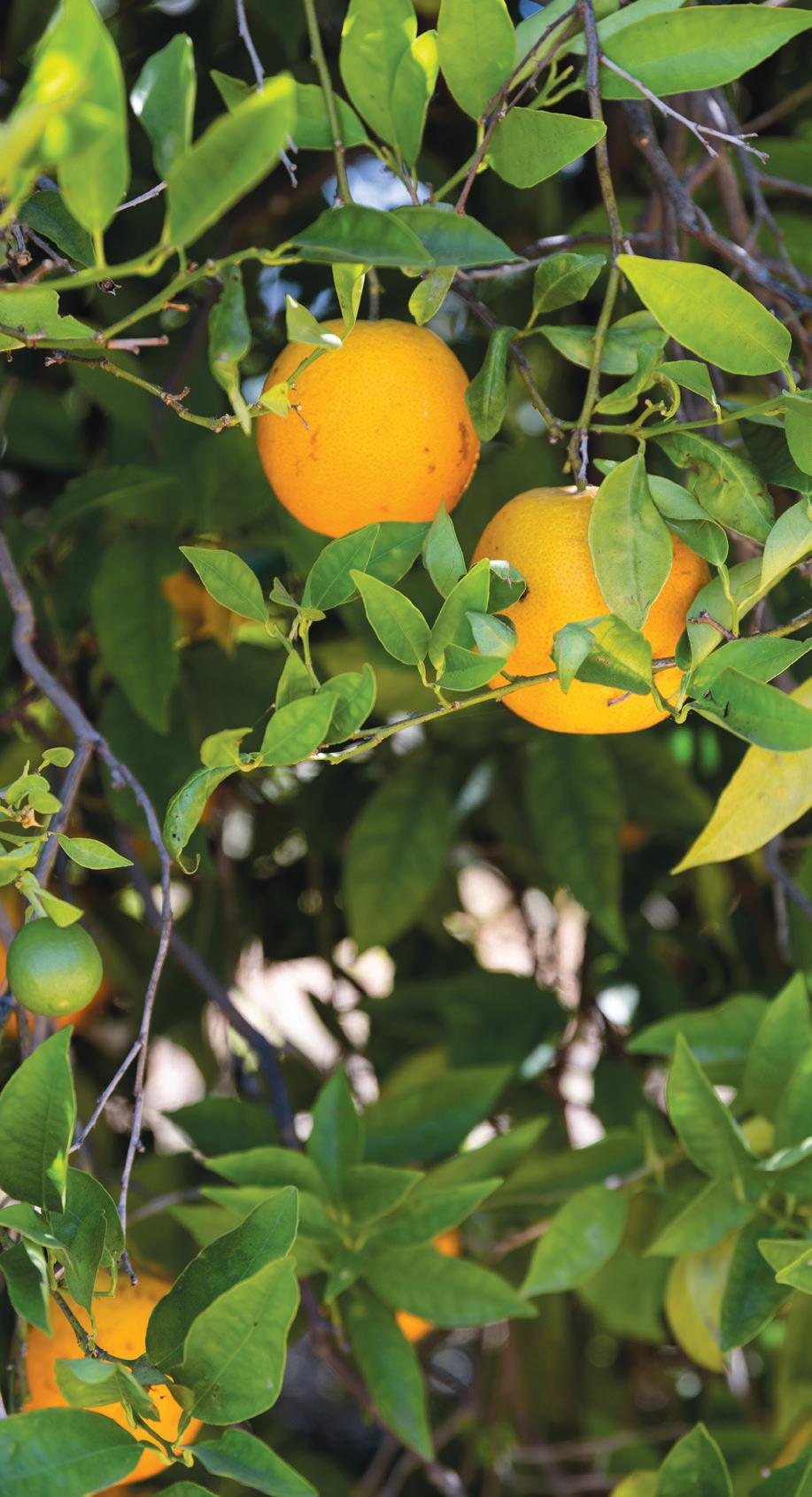

It began with a simple inquiry:
“How do we move upstream and prevent homelessness before it starts?” This led to three specific tenets about where to try, who to serve, and for how long.
term financial stability, which will also continue to rely on both philanthropy and additional government grants.
“Creating an environment in which we are curious about the needs of young adults facing homelessness and then providing them with opportunities that help them meet those needs is something that’s going to, I believe, lead to some really positive outcomes,” Parziale says.
Mesa will offer both educational and vocational support services, but it’s “ really resting on this foundation of mental and physical health and wellness,” says Parziale. This means an expansive view of mental health, inclusive of traditional therapy (which will come from both public and private providers) and also art, breathwork and equine therapy. Breathe Ojai’s Francesca Gold will offer an eightweek trauma-informed therapeutic yoga course.
One of Parziale’s most elucidatory anecdotes starts with a well-meaning hairstylist friend who offered to come onsite to Mesa to give participants haircuts. Parziale was adamant he wanted residents to have the experience of making an appointment and going into a salon, just like any other customer would experience this routine-for-many act of self-care. It strikes me as the manifestation of a theme Parziale returns to often in our conversation: “ When you treat people really really well and you ask them what they need and then help to support them in getting that, things go well.”
Other variations of this theme include “Let’s treat people like people,” and “ We need to remember what it’s like to be loved.”
Relistening to my recorded interview with Parziale, my heart breaks a little bit at this last one as I imagine the inevitable disappointments that will occur along this journey. But for all his optimism, Parziale is also a realist.
“ We have 12 people here. That’s not ending homelessness. … But this is a pilot. Let’s prove our case. ... Then we either do it again ourselves or with partners. And again and again and again. And/or we are helping to influence and impact how this work is being done in other places.” At the time I spoke to him in May, Mesa was already receiving referrals and expected to receive well over 100 for their 12 spaces.

Parziale is also aware the road may not be a straight one for those who do get a place at Mesa, and he’s clear about how he wants Mesa to be different. “ When you mess up, we’re not going to automatically throw you out. Because that is how people who are in tough positions in life are oftentimes treated: ‘ We’re going to give you this opportunity, you’re lucky that you get this opportunity, play by the rules or else next person in.’ That’s not the kind of organization that I want to run; it’s not the kind of community that I want to live in.”
So far, all signs indicate that our community is the kind of place Parziale wants to live. Multiple individuals and businesses—including the previously mentioned hair stylist, a local chef, Ojai Mountain Farm, Radical Botanicals, Velvet Heart Equine Therapy, Night Heron Farms and Ventura Spirits, to name a few—are in talks about potential partnerships. Parziale reports almost no pushback from the community, which he attributes to being proactively transparent about Mesa’s mission from

Mesa participants may stay for up to 24 months, and the furnishings in their accommodations are theirs to take with them when they leave, instilling ownership right from the start and investment in their next step to independent living.
BY AVERY LIEB
Did you know that one out of three students in Ventura County are unhoused? Cathi Nye, homeless education program coordinator for the Ventura County Office of Education, asserts that this equates to over 5,000 K–12 students living in homeless situations. As a teenager myself, it’s hard to imagine facing all the challenges of school, family and growing up without a secure home. I’m compelled to help my peers in any way I can, and fortunately discovered incredible work being done to address the young homeless population right down the street from my school, at Mesa.
I shared Mesa’s website with my science teacher, and emailed Mesa to set up a class visit to better understand the organization and how we might help. We decided that each of us in the class would research and raise public awareness around aspects of Mesa’s diverse programming that interested us the most, ranging from nutrition and mental health to employment and housing.
My primary passion is design and how it influences our lives—therefore I was immediately struck by the power of Mesa’s architecture to create a calm, secure environment. There are 10 simple, sturdy cottages that convey a sense of stability, dignity and independence for the young adult living there. At the same time, each home is part of a larger, communal living design, and this promotes a sense of belonging and security. This unique location—10 acres of regenerative Ojai Valley farmland with expansive mountain views—is a vital and integral part of the design that enables participants to heal by finding connection to the earth. Mesa’s holistic design truly embodies its mission to create an integrated, community-centered approach to homeless prevention.
the beginning. To the contrary, Ventura County residents have been pivotal in donating considerable time and money to get the project launched.
And Parziale knows community is vital to Mesa’s success. “These are the [people] that need a community that’s going to say, ‘Not here. We are not going to let you fall through the cracks. We are going to wrap our arms around you and ensure that you have the opportunity to pursue the life that you want for yourself.”
When I thank Parziale for his work to get Mesa going, he responds with this: “I do ultimately believe to my core that as good as this will be for the young adults who are living here, it will be just as good for our community. This is going to make us a better community.”
Jennifer Richardson is the author of Americashire: A Field Guide to a Marriage, an Indie Reader Discovery Award winner for travel writing. She and her British husband consider themselves lucky to call both Ventura and a village in the English Cotswolds home. To learn more, visit JenniferRichardson.net
The Mesa design was intended not only to help the well-being of its occupants, but also the health of our planet. To this end, co-founder Dan Parziale told me they focused on integrating sustainability into the design whenever possible. For example, the property’s large water catchment areas collect rain runoff as part of an overarching goal to “eliminate reliance on Lake Casitas.” Furthermore, Parziale hopes to transition Mesa to “100% electric, solar-generated power on site.”
The work being done at Mesa is truly inspirational— they are addressing a complex crisis through simple, downto-earth design, while nurturing the body, mind and spirit of its community members. So, organize your classmates and friends, visit Mesa and learn how farming and design can improve our lives.

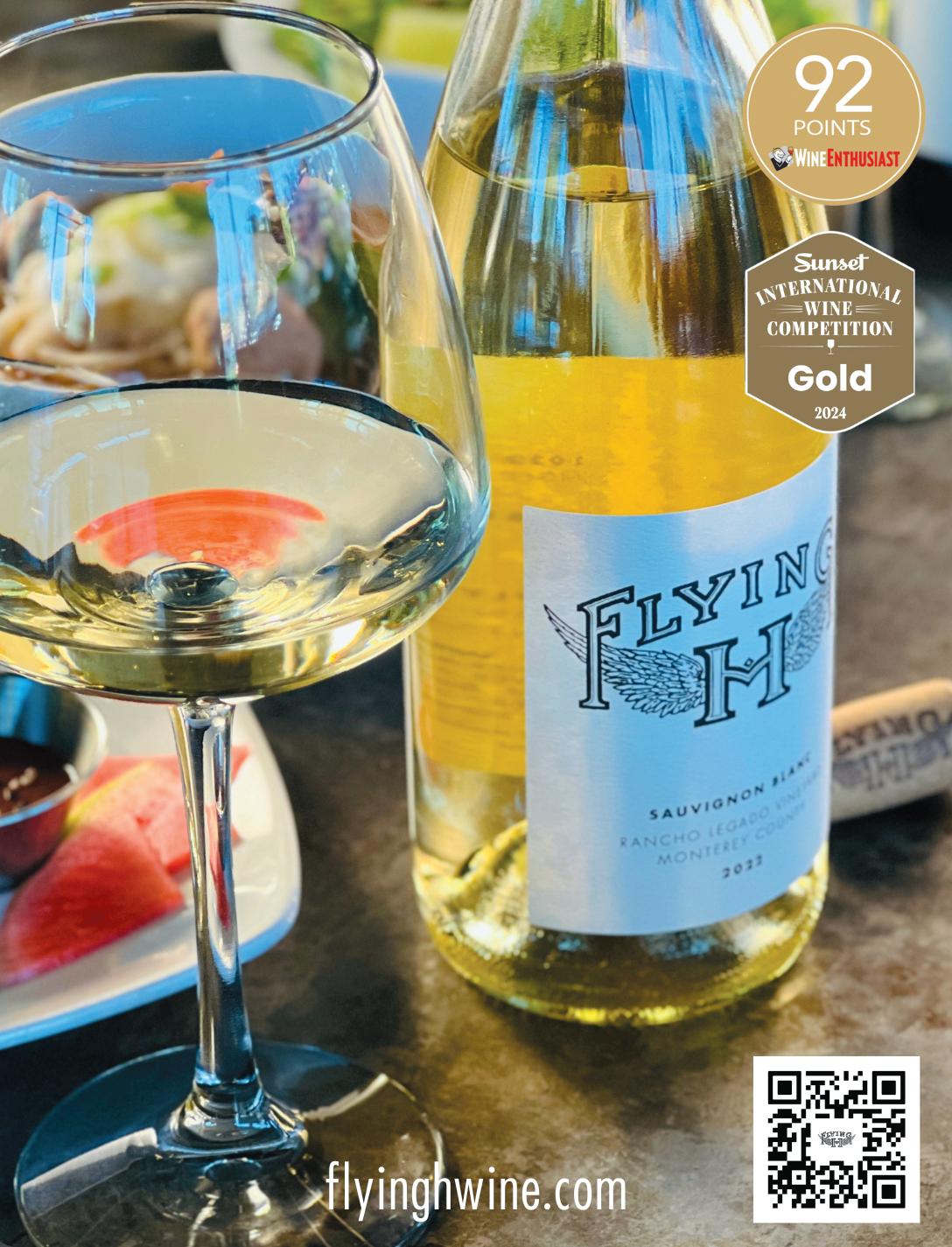

BY ADRIEL CHU | PHOTOS BY VIKTOR BUDNIK
El Encanto Restaurant’s Chef Martin Ledesma enchanted Casa Pacifica Food and Wine Festival guests this past June as he won first place in the Sweets category with his Honey-Orange Panna Cotta, spreading a little bit of the joy and community he fosters at his Mexican family restaurant.
“I play with my food,” says Ledesma. “When you are young, your mother tells you not to play with your food, but I play with my food.”

Save the Date! June 1, 2025
Playful really is the best way to describe the way he presents his dishes, full of whimsy and fun. With a dedicated crowd of regulars at the restaurant, it can be hard to get a reservation for one of his fabulous Friday dinners, but it’s always worth it to see what he’s created for the week.
With other hits like his Valentine’s Day breakfast dessert and the “prehistoric lava cake” on the Friday Special, it’s no wonder available seats are in short supply. The creativity involved in the breakfast dessert alone is quite impressive: a mango passion fruit sunny-side up “egg” with white chocolate coconut mousse “whites” served with apple and pineapple “breakfast potatoes” and sugar and chocolate pasta with maple glaze “bacon.”
The restaurant itself, located in Camarillo, serves as a place to gather as well as enjoy his food.
“It’s like I am inviting you to my house,” he says. The way his customers treat it is not wholly unlike a family gathering, either, sometimes calling in to let him know that they will not be visiting at their normal time.
What makes him happiest, he says, is when his customers leave with a smile, or when they say something like “We should do this again sometime,” with both their hearts and bellies full.
Meanwhile, Savory category winner Chef Alex Montoya of Water’s Edge in Ventura stepped up with his “Beef & Reef”—lobster and Oaxaca cheese arancini with braised short rib birria, pickled red onion pearls and garnished with fresh micro cilantro—the perfect climax to his three-year Casa Pacifica winning streak.

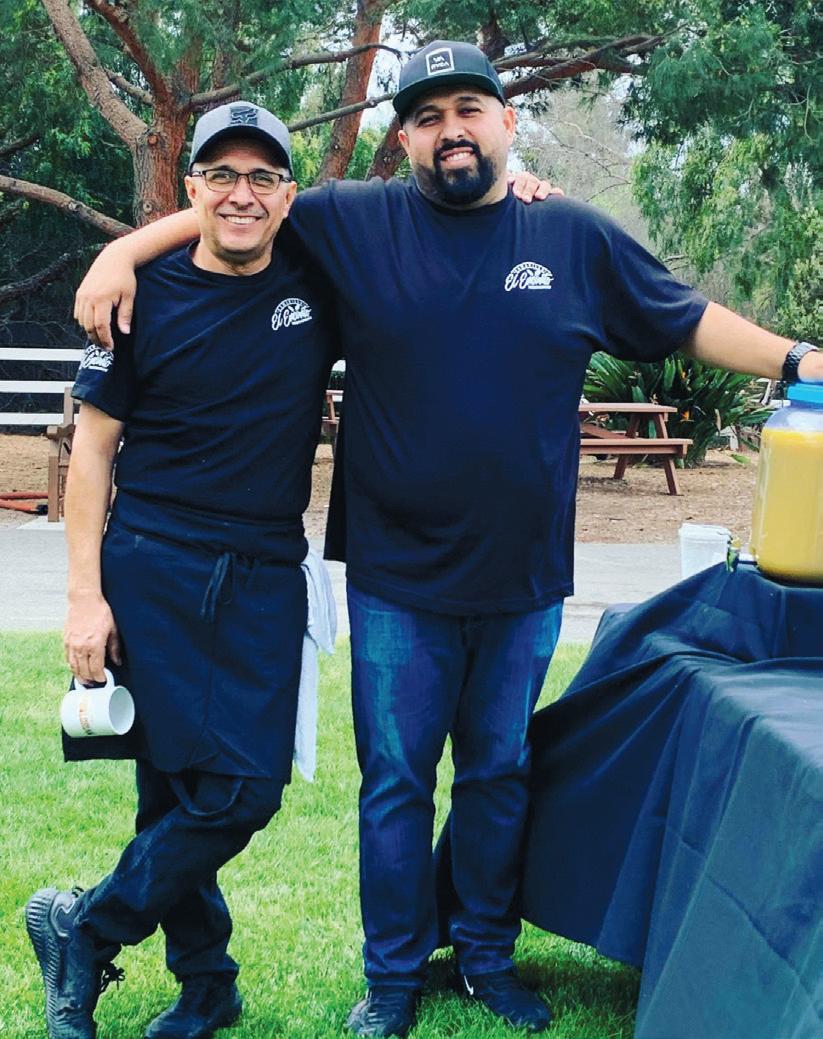
From top: Chef Martin Ledesma’s winning Panna Cotta with honey orange; Chef Martin Ledesma (right) with his dad, both of El Encanto Restaurant Camarillo; Second place winner Chef Damien Giliberti of Ox & Ocean with Savory winner Chef Alex Montoya of Water’s Edge.





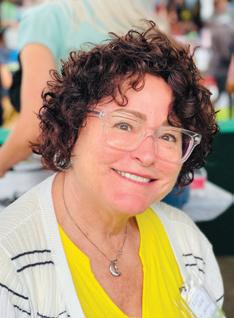

Chef Abdu Romero, Chef Eric Kopelow, Lisa McKinnon, Amy Madsen, Chef Rachel Wiener
The big news here is that he is not planning to compete next year. He’s not worried, though; he’s leaving his legacy in the capable hands of the Water’s Edge team.
Part of his job as executive chef includes making every part of the food as accessible to his customers as possible, hearkening back to his first job as head chef, when he had an open kitchen where customers had a clear view of the food prep. As he worked, Montoya was always open to explaining the process, giving samples, and expanding palates. Whoever showed so much as a glint of curiosity, he would oblige. A true crème diplomat(e)’s diplomat.
Montoya carries that attitude even as he’s grown to manage the numerous kitchens of Water’s Edge, Waterside and Honey Cup Coffee and Creameries. He’s partnered up with local high schools from time to time, giving the students insight on what working in a professional kitchen is like. “It may look glamorous, but it has to get ugly behind the scenes sometimes,” he says.
When asked for advice on expanding the palate and experiencing food, he says, “I used to be a picky kid. Still am, kind of. But when it comes to experiencing a chef’s creation, be open-minded. Everything on that dish is there for a reason.”
Chef Montoya has a dozen and a half catchy phrases to describe himself, but in the end, he’s an ambassador. He’s approachable, but his work speaks for itself; the bridge between the restaurant and the people is through his food.
SAVORY
1st – Chef Alex Montoya, Water’s Edge Restaurant & Bar, Short Rib Birria, Lobster Oaxaca Cheese Arancini, Pickled Red Onion Pearls
2nd – Chef Damien Giliberti, Ox & Ocean at Zachari Dunes, Slow-Braised American Wagyu Shank with grain polenta, stewed carrots and charred cipollini onions in a red wine reduction
3rd – Chef Carlos Ortiz, Limon y Sal, Taco with Tropical Pico de Gallo, fresh pineapple, cilantro, tomato and lemon
SWEET
1st – Chef Martin Ledesma, El Encanto Restaurant, Panna Cotta with honey orange flavor
2nd – Gina Stymacher, Camarillo Cupcake, Jalapeño-infused Lemon Bar with chile lime seasoning and candied jalapeños
3rd – Julia San Bartolome, Founder of Sweet Arleen’s, Tequila Lime Mousse, which featured a Frito chip crust, Grand Marnier whipped cream and Chamoy strawberries






Make your urban garden a wildlife sanctuary
BY TAMI CHU
When I told my best friend that I had gotten my yard certified as a wildlife sanctuary, she laughed. “Of course you did.” Her yard would qualify, too, but she doesn’t get as excited about rewilding and permaculture gardening as I do. One question she had for me stuck out, though: “What do you get out of certifying? Other than your obvious glee.”
I didn’t have a complete answer, so I looked it up. Turns out, it isn’t what I am getting out of it so much as helping to educate others about what we can do for the wildlife in our area.
According to the California Department of Fish and Wildlife, California is considered a “global ‘hot spot’ of biodiversity” due in part to its varied geography. But we also have the most threatened species out of all the states, due in part to habitat loss, invasive species and climate change.
“The number one threat to wildlife worldwide is a loss of habitat,” says Beth Pratt, California regional executive director for the National Wildlife Federation and leader of the #SaveLACougars campaign. “We have destroyed so much of their habitat with human development, they are running out of options.”
Mountain lions are just one of the species losing ground. Cougar P-22 (puma 22) was a young cat that gained celebrity by crossing two major freeways—the 101 and 405—and then lived his last 10 years in the relatively tiny range of Griffith Park. His life, and death in 2022, inspired the Wallis Annenberg Wildlife Crossing currently being built over the 101 freeway at Liberty Canyon in Agoura Hills.
“The fees for the Certified Wildlife Habitat through the National Wildlife Federation do not go directly to the Wallis Annenberg Wildlife Crossing/#SaveLACougars campaign,” says Pratt. “But since those are both projects of the National Wildlife Federation, they still help support our work on the wildlife crossing indirectly.”


CERTIFICATION: For single site only
nwf.org/Garden-for-Wildlife/Certify $20/Sign available for purchase for $30 or plaque $99
For Camarillo resident Carol Gravelle, converting her yard was the right thing to do. “I’ve done habitat restoration on the Channel Islands and learned what a crucial role we each can play in supporting wildlife and ecosystems,” she says. “Since taking out our front grass and planting mostly California native plants, the garden teems with life!”
It is a very simple process and relatively inexpensive to become certified. It is self-reported, but should include the following:
Food: This could be nectar plants, fruit trees or bushes or vegetable plants. It could also be bird and hummingbird feeders.
Water: Butterfly bubblers, bird baths or a fountain could all work here.
Cover/shelter: Bushes and thickets, trees for roosting and nesting, bird or bat boxes, carpenter bee houses, etc.
Sustainable practices: Water conservation, planting noninvasive natives, creating swales or other water-saving methods like rain barrels and no herbicides or pesticide use.
“Certifying the garden and displaying the sign suggests to passersby an alternative to a traditional lawn,” says Gravelle, “and another reason to consider it beyond the more obvious water-saving aspects.”
For home or business
MonarchWatch.org/waystations
$18/$18 for sign
“Simple steps like installing a bird bath or planting native plants can make an enormous difference to the wild world,” says Pratt. “Build it and they certainly will come! For a monarch butterfly, for example, the milkweed in your backyard, a fuel stop, may make all the difference in whether they can survive their annual migration.”
Your habitat/way station should include all of the following:
Size: At least 100 square feet.
Exposure: 6 hours of sun daily.
Shelter: Food and host plants should be relatively close together.
Milkweed: at least 10 plants (Showy milkweed is native to Southern California.)
Nectar plants: Should contain several that provide food for monarchs throughout breeding season, annuals, biennials and perennials.
Management: This is about sustaining the way station with sustainable practices, including watering, mulching, trimming, winter management (in case of nonnative milkweed), eliminating pesticide use, etc.


Converting your yard—or a portion of your business or school site—to native plants and creating habitats for wildlife is a process. It took me 10 years of slow changes to fully convert 2,500 square feet to be certifiable, but it can also be done in a matter of weeks or months.
“Wildlife-friendly gardens not only benefit the animals, but also people. Native plants can help with water conservation and fire-resistant landscaping, and tree coverage with carbon sequestration and reducing noise and light pollution,” says Pratt. “And studies have shown that adding gardens to your home can also benefit your physical and mental health.”

naba.org
$15/$25 for the sign
Once you are working with monarchs, you can expand your plantings and cater to even more butterfly species.
For certification your butterfly garden must include:
Host plants: Plants that are caterpillar food for at least three different species and at least three of each type of plant. Native plants are recommended but not required. Plan for abundance!
Nectar plants: At least three different types of native nectar plants that feed butterflies, preferably more than one plant of each variety. Consider the plants that feed multiple pollinators, and especially natives.
Management: Zero use of pesticides or insecticides, even organic. Water source is encouraged but not a requirement for the garden.
Note: Most of these certifications also allow for businesses and institutions to become certified for a slightly different rate. The following is just for farmlands and/or businesses.
• Bee Better Certification For Farmers And Businesses: BeeBetterCertified.org
• Audubon Certified Bird-Friendly Grasslands: Audubon.org/news/ audubon-certified-bird-friendly-sealgets-bird-friendlier
• For more resources and education, including for schools and groups like Boy/Girl Scouts and 4-H, visit Xerces.org/pollinator-conservation/ yards-and-gardens.
by






















Did you know? There are two types of squash: Illustrations by Ramiah Chu
Save seeds from a squash that you liked.

Place several seeds in a pot with some soil from the garden. Keep them about ½-inch deep.
Give it a bit of water and sunshine.
Both SUMMER and WINTER squash are grown in the summer, but winter squash is harvested in the fall and can be kept for several months.




These have thicker skins, the flesh is better cooked and the seeds are best removed and toasted.

These squash have thin skin and can be eaten whole—skins, seeds and all!
Send us a snapshot of your colored maze and we might share it!


TUESDAYS
Simi Valley
Adventist Health Farmers Market NEW! 3000 Sycamore Dr. Tuesdays, 10am–3pm @svfarmersmarket
WEDNESDAYS
Midtown Ventura
Certified Farmers’ Market
Pacific View Mall
(West End Parking Lot) 3301 N. Main St.
Wednesdays, 9am–1pm (rain or shine)
VCCFM.org
805-529-6266
THURSDAYS
Downtown Oxnard
Certified Farmers’ Market
Plaza Park, 5th St. & B St.
Thursdays, 9am–1:30pm (rain or shine)
OxnardFarmersMarket.com
805-247-0197
Ojai Community Farmers’ Market
Chaparral Courtyard 414 E. Ojai Ave.
Thursdays, 3–7pm
OjaiCommunityFarmersMarket.com
661-491-0257
Thousand Oaks
Certified Farmers’ Market
The Oaks Shopping Center (East End Parking Lot) Wilbur Rd. & Oaks Mall Dr.
Thursdays, noon–5pm (rain or shine)
VCCFM.org
805-529-6266
FRIDAYS
Simi Valley
Certified Farmers’ Market
Civic Center Plaza
2757 Tapo Canyon Rd. Fridays, 11am–3:30pm (rain or shine)
Facebook.com/SimiValleyMarket
805-643-6458
SATURDAYS
Agoura Hills
At Whizen Market Square 28914 Roadside Dr. Saturdays, 10am–3pm @ccfminc
Camarillo Hospice
Certified Farmers’ Market
2220 Ventura Blvd., Old Town
Saturdays, 8am–noon (rain or shine)
CamarilloFarmersMarket.com
805-987-3347
Downtown Ventura
Certified Farmers’ Market
200 Block of Main St. From Palm to Mission Park
Saturdays, 8:30am–noon (rain or shine)
VCCFM.org
805-529-6266
Santa Paula Certified Farmers Market At Anna’s Cider 801 E. Main St. Saturdays 10am–2pm anadaluyt@gmail.com
SUNDAYS
Ojai
Certified Farmers’ Market Behind the Arcade
300 E. Matilija St.
Sundays, 9am–1pm (rain or shine)
OjaiCertifiedFarmersMarket.com 805-698-5555
Moorpark
Certified Farmers’ Market 450 High St. Sundays, 9am–2pm EnrichedFarms.com
818-699-6204
Community Market At Oxnard College Campus Parking Lot
Sundays 8am–3pm Maria_olivares2@my.vcccd.edu
Channel Islands Harbor Farmers’ Market
Marine Emporium Landing 3350 S. Harbor Blvd., Oxnard
Sundays, 10am–2pm (rain or shine)
RawInspiration.org 818-591-8161
Saticoy Farmers’ Market
Saticoy Park 11321 Violeta St.
FIRST SUNDAY OF EACH MONTH 10am–2pm @saticoyfarmersmarket
Westlake Village Farmers’ Market
2797 Agoura Rd. Sundays, 10am–2pm (rain or shine)
RawInspiration.org 818-591-8161
Ventura College Foundation
Weekend Marketplace
Ventura College East Parking Lot
Corner of Telegraph Rd. & Day Rd.
Saturdays & Sundays, 8am–2pm VenturaCollegeFoundation.org

See EdibleVenturaCounty.com for CSA information.
Note: All info was updated in August 2024. As details do change, please contact the markets for the latest info.

Crave Gelato Kofi Bar
Ventura Harbor’s coffee and dessert bar with premium organic coffee, lattes and curated cold-brews, handcrafted plant-based gelato and even pup-cups.

947 Schooler Dr., Ste. 105 | Ventura | 805-918-0553 | GelatoKofiBar.com
Old Creek Ranch and Winery
Enjoy premium wines while relaxing In beautiful guest areas Including meandering pathways and lawn games. Plan for a destination, not just a quick stop for wine tasting! Open Thurs-Mon 11a-5p.
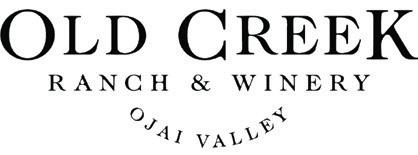
10024 Old Creek Rd. | Ventura | OldCreekRanch.com.
Limón Y Sal
Authentic Mexican dishes made from scratch with fresh local ingredients. A Downtown Ventura favorite for over 20 years, serving breakfast, lunch and dinner, including vegan options and awardwinning margaritas.

598 E. Main St., Ventura | 805-628-3868 | LimonySalVentura.com
Paradise Pantry
Food with a local emphasis, including great sandwiches, salads, mac ‘n’ cheese, gourmet goodies, a cheese counter and an extensive wine shop. Diners can also enjoy craft beers, wines by the glass or wine flights.
222 E. Main St. | Ventura | 805-641-9440 | ParadisePantry.com
Poseidon Brewing Company


All Things Tea
European teahouse with certified Tea Specialist. Specialty loose leaf teas from the finest plantations and gardens around the world. Cream Tea, Afternoon Tea and High Tea.
In Paseo Camarillo Center | 300 N. Lantana St., #37 | Camarillo | 805-445-8327 | Tea-Liteful.com
Onyx Bistro
Woman-owned and -operated, serving a casual but refined seasonal menu made with locally sourced ingredients and paired with local craft beers and wine. Indoor and outdoor seating and live music on weekends.


A small, local, veteran-owned craft brewery making a variety of beer styles. Visit the tasting room or take a growler to go.
5777 Olivas Park Dr., Ste. Q | Ventura | 805-477-0239 | PoseidonBrewingCo.com
Ventura Spirits
Since 2011, using the natural and agricultural bounty of California’s Central Coast to hand craft novel and delicious spirits.
3891 N. Ventura Ave. | Ventura | 805-232-4313 | Order online at VenturaSpirits.com
NEWBURY PARK/OXNARD
Ragamuffin Coffee Roasters
Family-owned and -operated coffee shop and bakery with ethically sourced coffee, gluten-free pastries and excellent service.



111 N. Reino Rd. | Newbury Park | 805-375-9000 and 550 Collection Blvd., Ste. 130 | Oxnard | 805-278-5837 | RagamuffinRoasters.com
Ox and Ocean
Tying into the unique makeup of California, Ox & Ocean serves locally sourced produce and seafood fresh from Oxnard’s plains and sea, celebrating a diverse influence and distinct flavors in an elegant, yet approachable fashion.

2101 Mandalay Beach Rd. | Oxnard | 805-984-2500 | OxandOcean.com
2390 Las Posas Rd. Ste. H | Camarillo | 805-991-7356 | OnyxBistroCamarillo.com
The Wine Closet
Wine lounge in Old Town Camarillo, featuring unique wines, craft beers, small plates, lunch and dinner. Weekly happy hours and featured wine tastings. Indoor and outdoor seating. The specialty market offers retail sales of fine wines, craft brews, artisan cheeses and charcuterie. 2423 Ventura Blvd. | Camarillo | 805-746-5708 | WineClosetInc.com

The Cove Pool, Kitchen & Bar at Four Seasons
Westlake Village
Situated on 2 acres, this luxury pool concept offers an outdoor restaurant and bar celebrating seasonal and locally sourced ingredients with a Baja Med menu created by Chef Jesus Medina.
2 Dole Dr., Westlake Village, 818-575-3000, Fourseasons.com/westlakevillage/dining/restaurants
Roan Mills Bakery
California’s first land-to-loaf bakery, Roan Mills grows the wheat, mills the flour, bakes the bread and makes the pasta. Stop in at their bakery in historic downtown Fillmore and taste the difference.
411 Central Ave. | Fillmore | RoanMills.com
Private Chef-Catering
Robin Goldstein is a California chef who works her culinary magic combining unique flavors and seasonal ingredients with classic techniques inspired by her extensive travel around the Mediterranean. PrivateChefRobin.com







• European Tea Room
• Over 130 Specialty Teas
• Cream Tea, Afternoon Tea, High Tea
• Bridal Showers, Baby Showers, Catering
Tue–Sat, 10am–5pm
300 N. Lantana St. #37, Camarillo Tea-Liteful.com 805-445-8327
Call for reservations


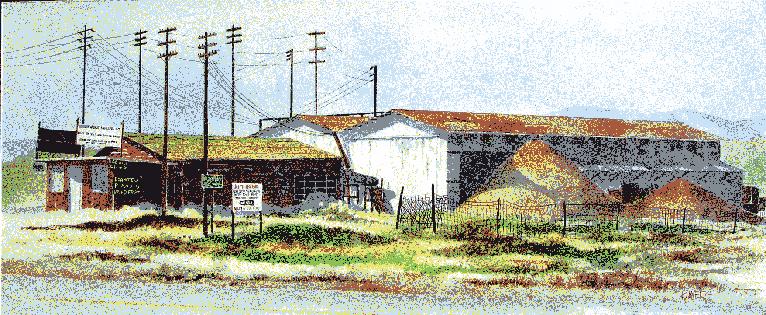

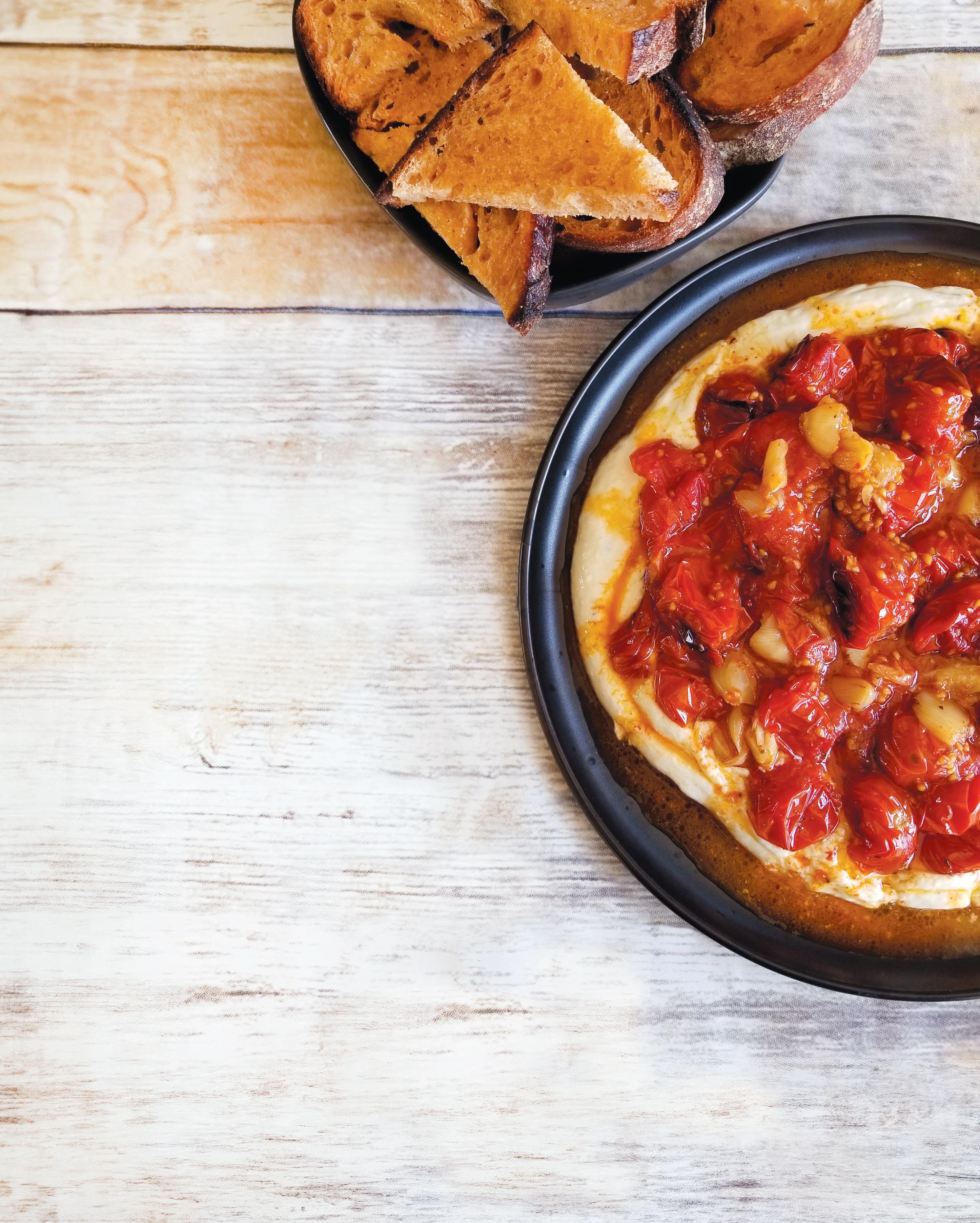
RECIPE AND PHOTO BY TAMI CHU
If treated well, watered and shaded from excess heat, tomatoes can grow well into November and December in Ventura County. In fact, some varieties are really just starting to ripen in early “fall.” Whipped feta has been trending lately on certain social media platforms, so we thought we would create our take on it. This recipe uses the abundance of tomatoes from the garden or farmers’ market and pairs the sweet roasted fruit with a creamy, lemony whipped feta, perfect for an afternoon snack, party dish or dinner appetizer.
Serves 4–6
1 pint fresh cherry tomatoes (or 2–4 large ripe tomatoes, cut into 1-inch chunks)
1 head garlic
2–4 sprigs fresh thyme or ½ teaspoon dried thyme
½ cup olive oil
½ teaspoon sea salt
½ teaspoon cracked black pepper
6 ounces feta, drained
4 ounces cream cheese
Zest of 1 lemon
¼ cup extra virgin olive oil
1 sourdough baguette sliced into ½-inch slices and oven toasted
Preheat oven to 400°F.
In an 8- by 8-inch roasting pan, spread tomatoes to cover the bottom of the pan. Trim about ¼ off the root end of the garlic head and place it cut side up in the middle of the tomatoes. Place fresh thyme in with the tomatoes (or sprinkle dried thyme over all tomatoes and garlic). Drizzle olive oil liberally over tomatoes and garlic. Sprinkle with salt and pepper.
Bake for 40–50 minutes, until tomatoes have begun to burst and garlic is tender. Remove from the oven and allow to cool for about 5 minutes. Extract roasted garlic from the skin into a small bowl and mash with a fork (or to a chop board and dice).
In a food processor, add crumbled feta cheese, cream cheese and lemon zest. Process on low while drizzling in the ¼ cup of olive oil about a tablespoon at a time until mixture is creamy. Transfer to a small serving dish and smooth the mixture to cover most of the plate.
Spoon the tomatoes over the cheese mixture, sprinkle the garlic all around on the tomatoes and then drizzle with the remaining oil and juices from the pan. Garnish with more fresh thyme and serve immediately with the toasted baguette.















